

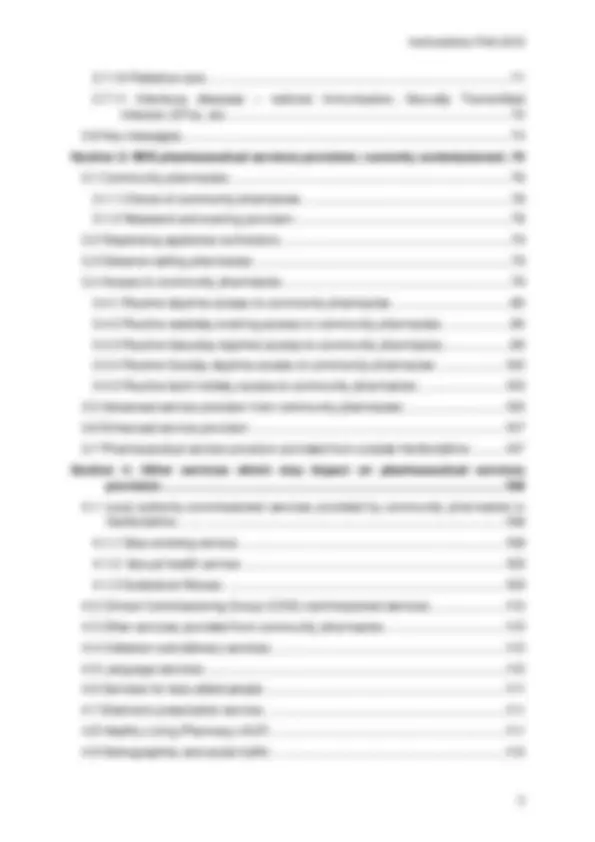
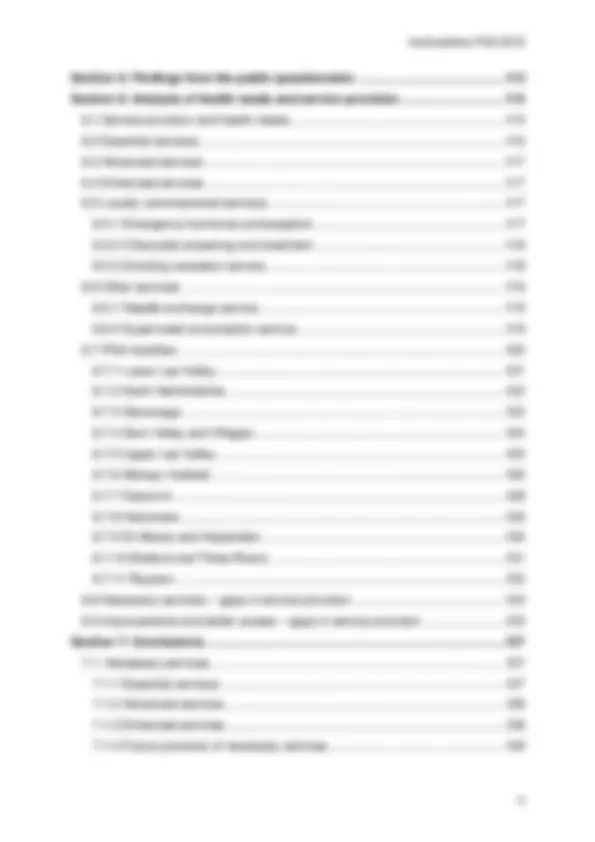
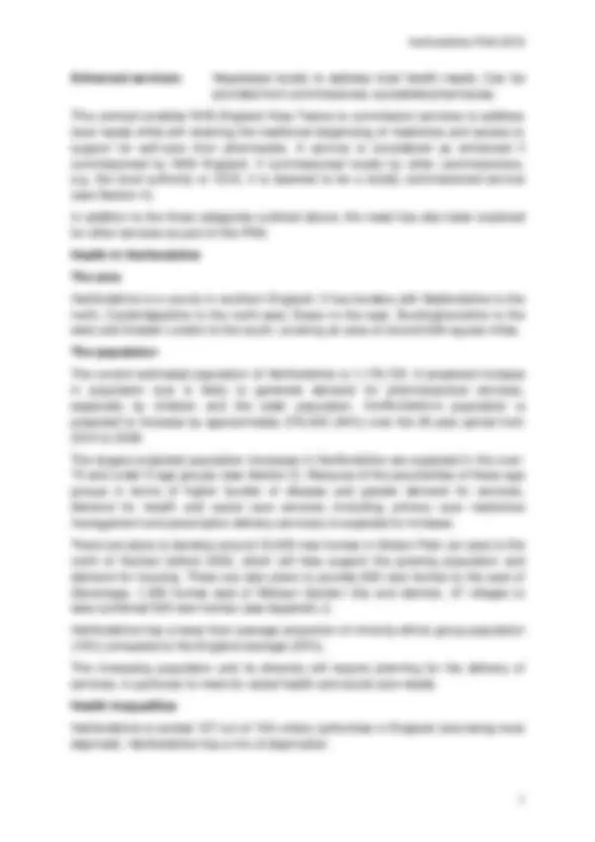
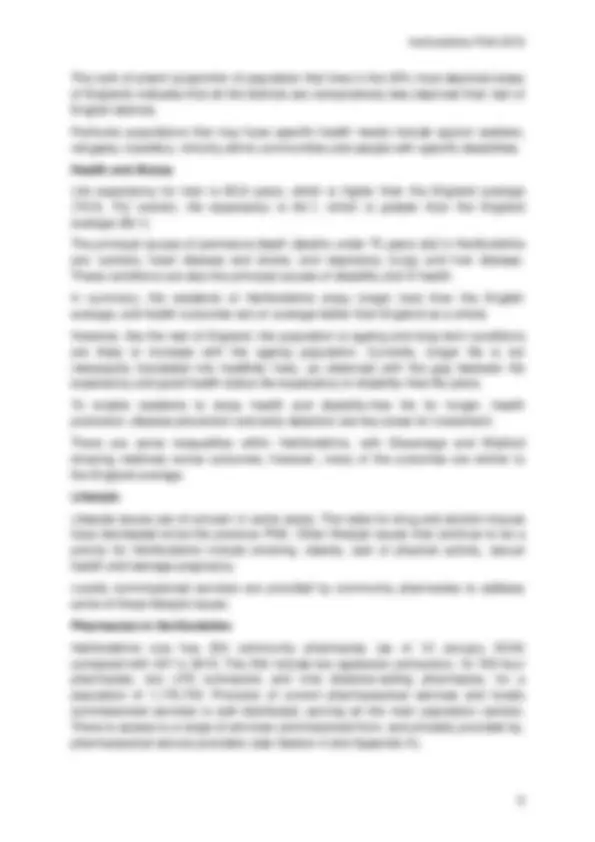
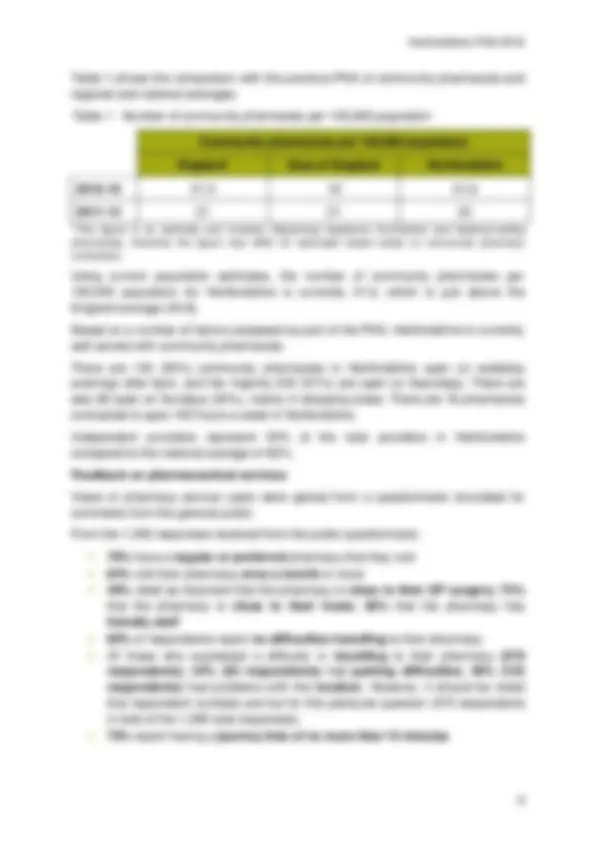
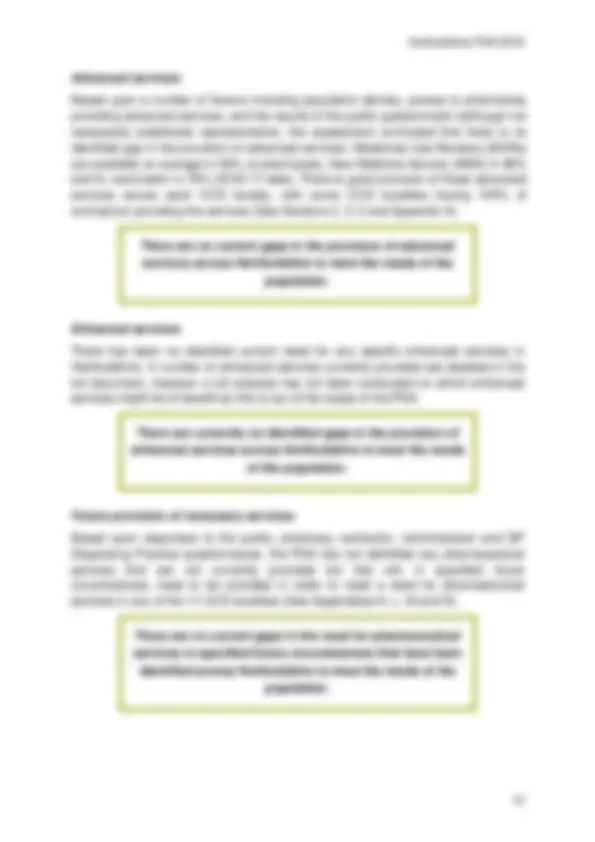
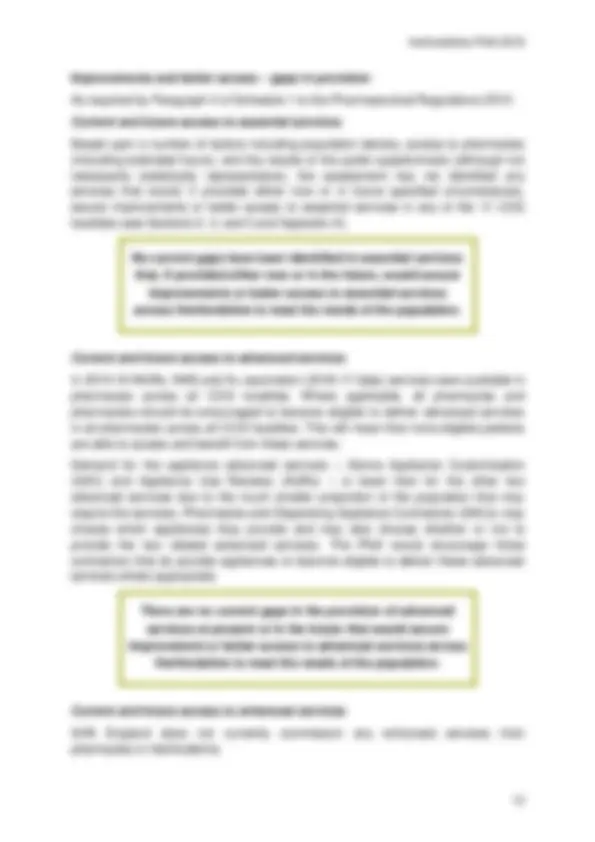
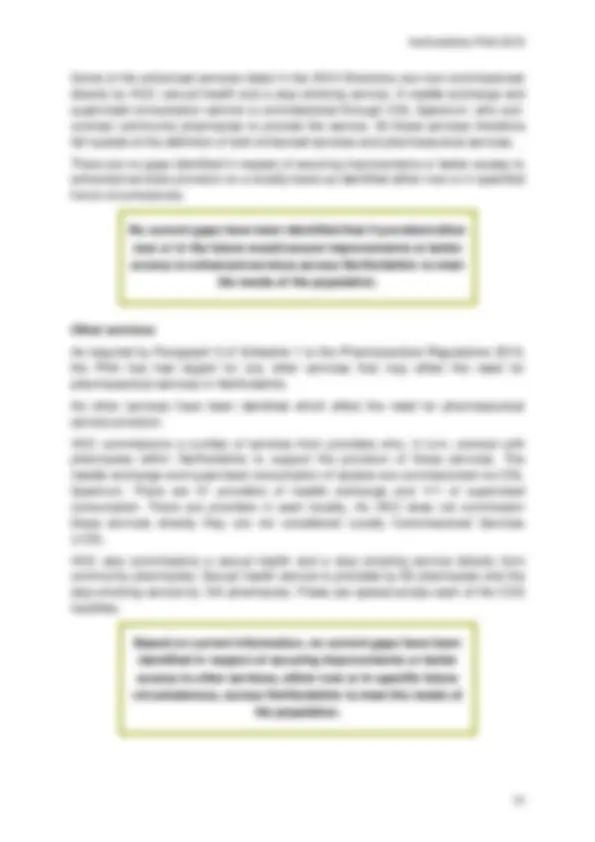
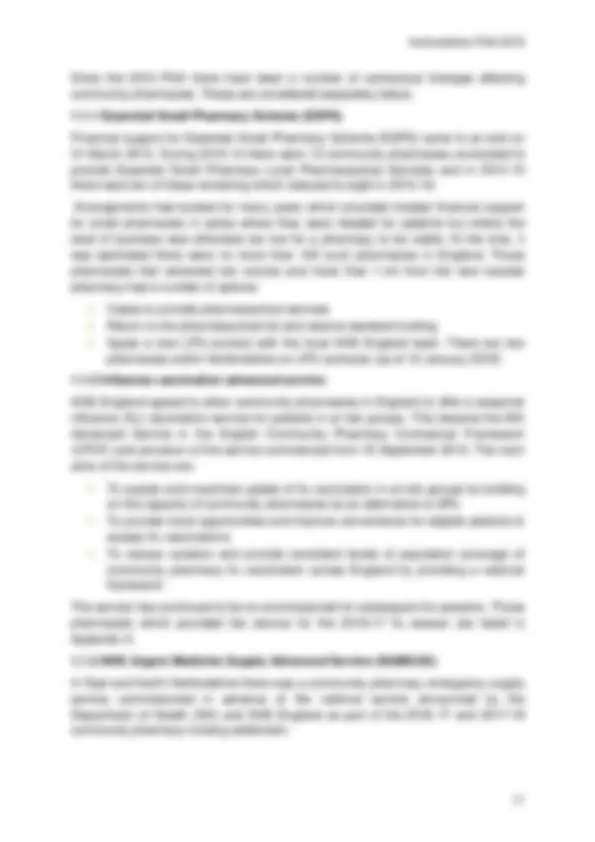
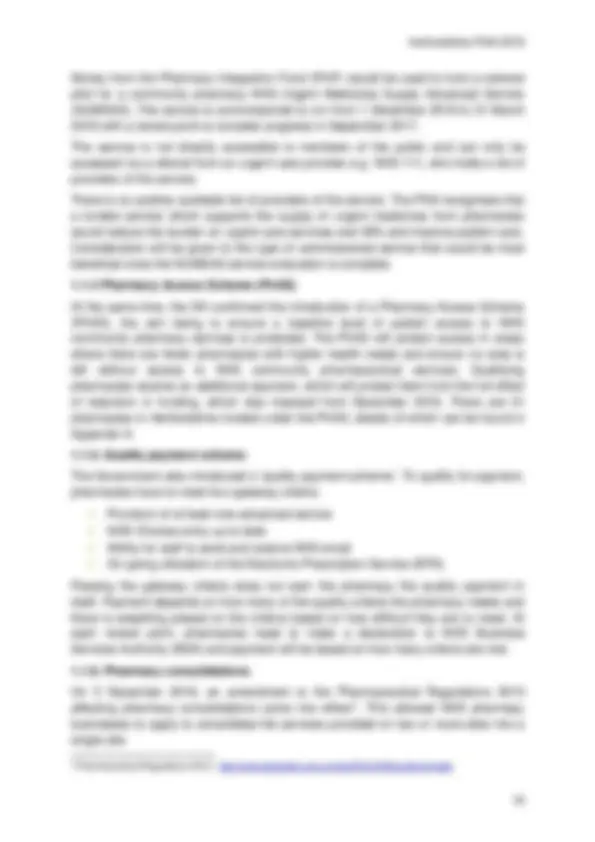
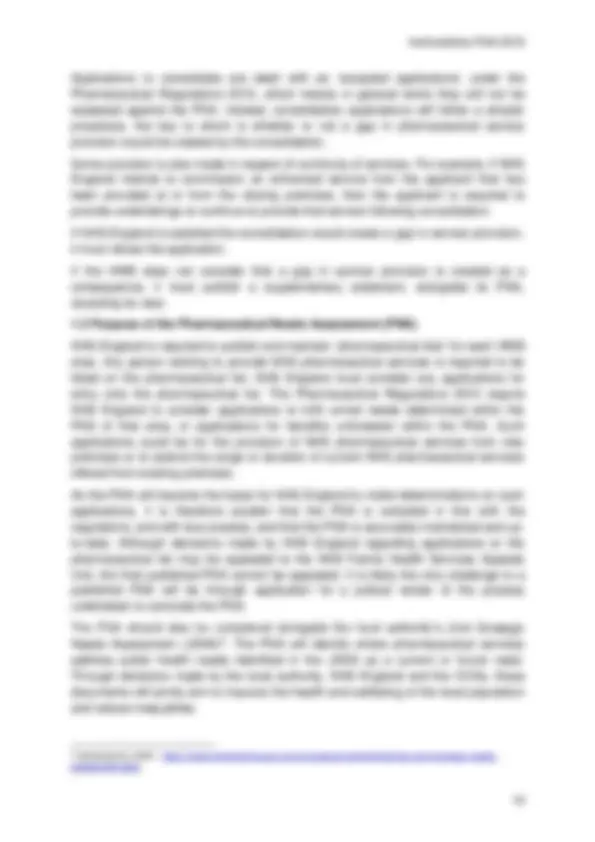
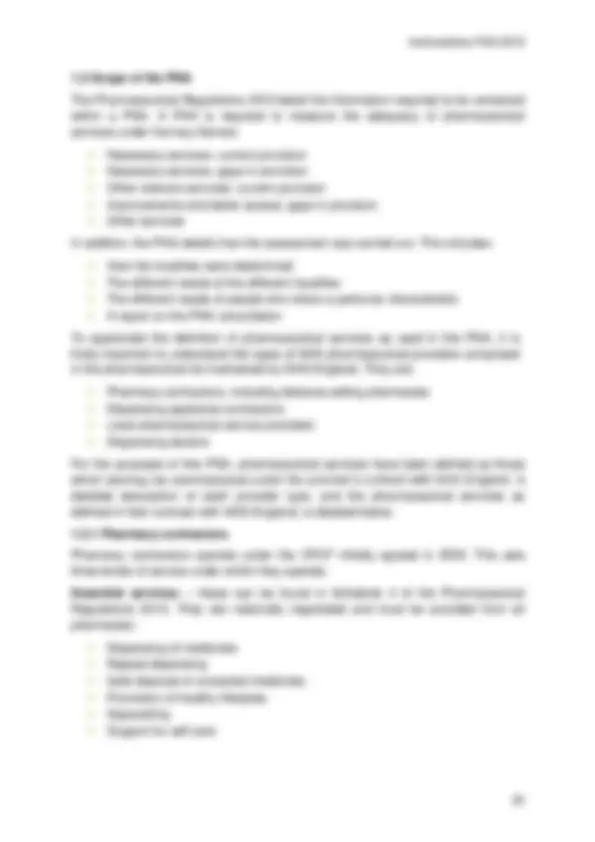

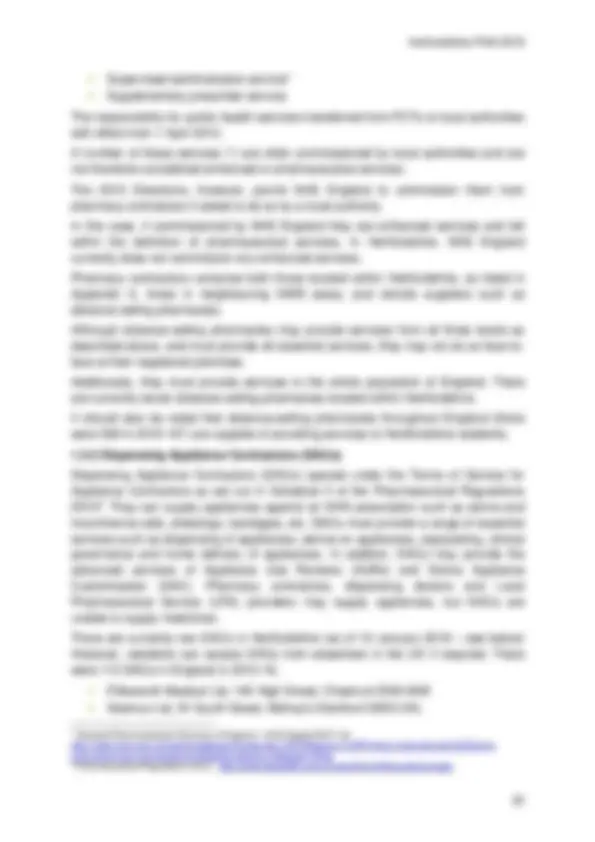
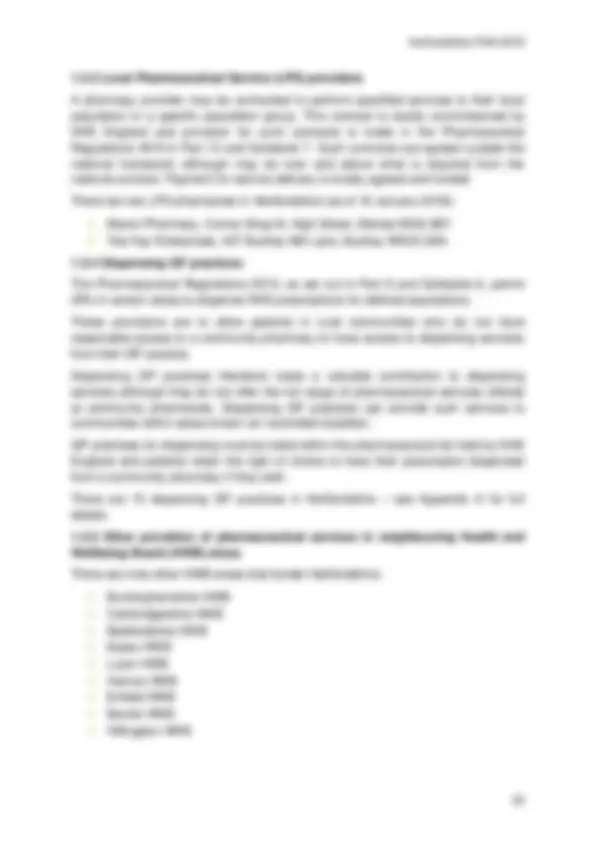
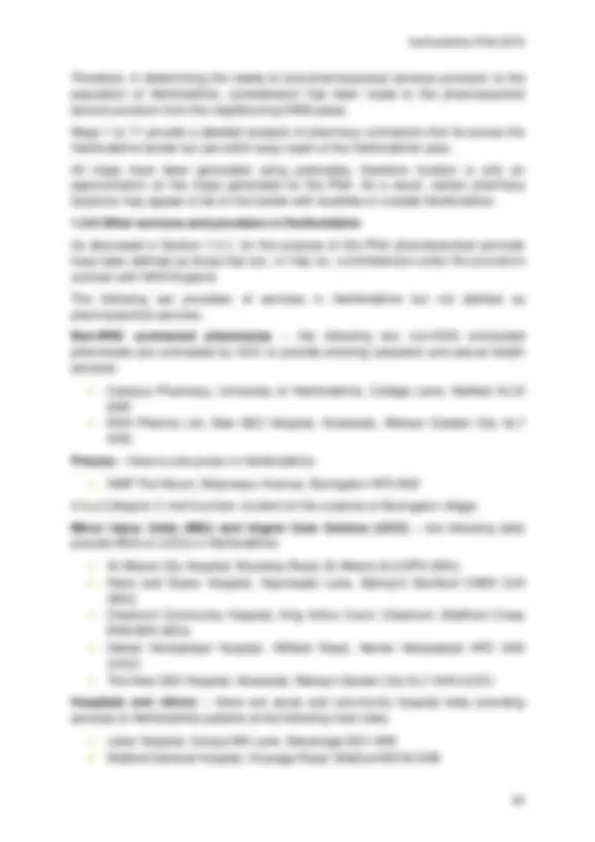

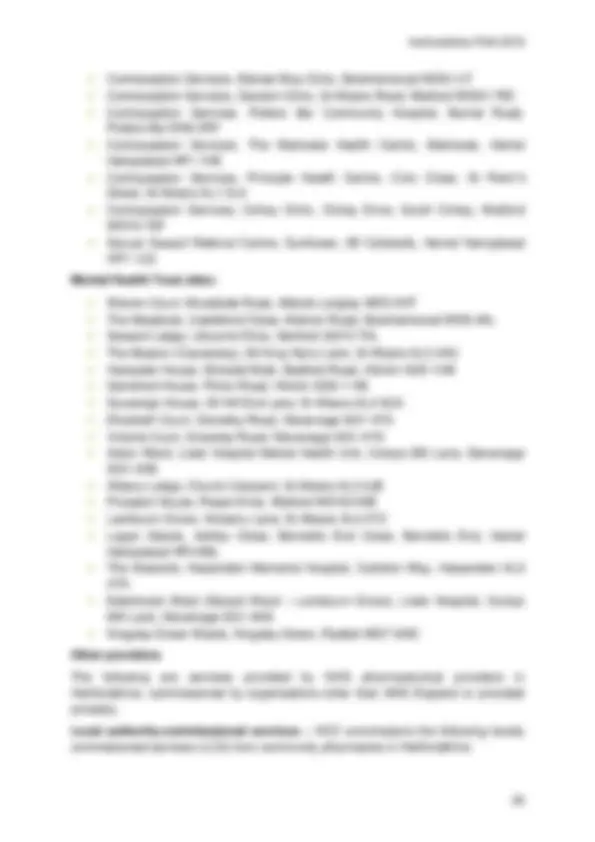
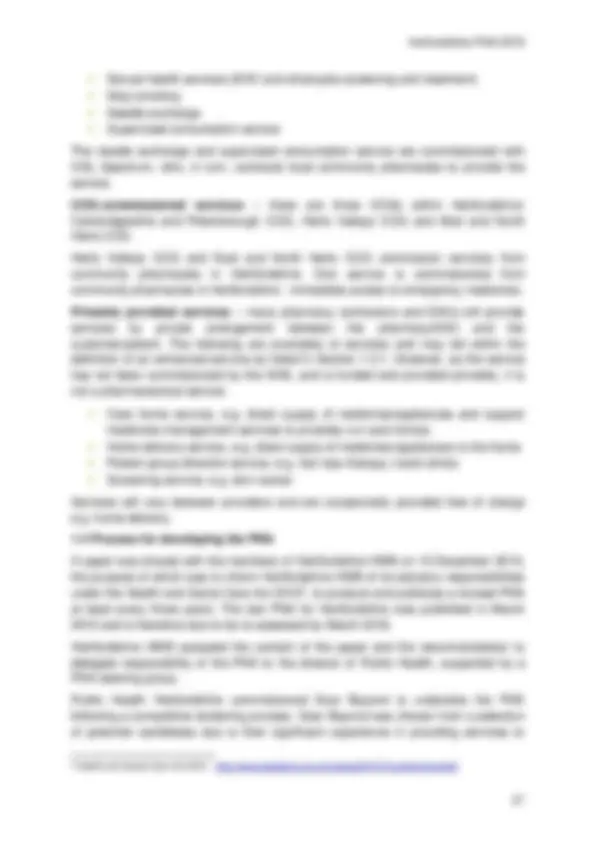
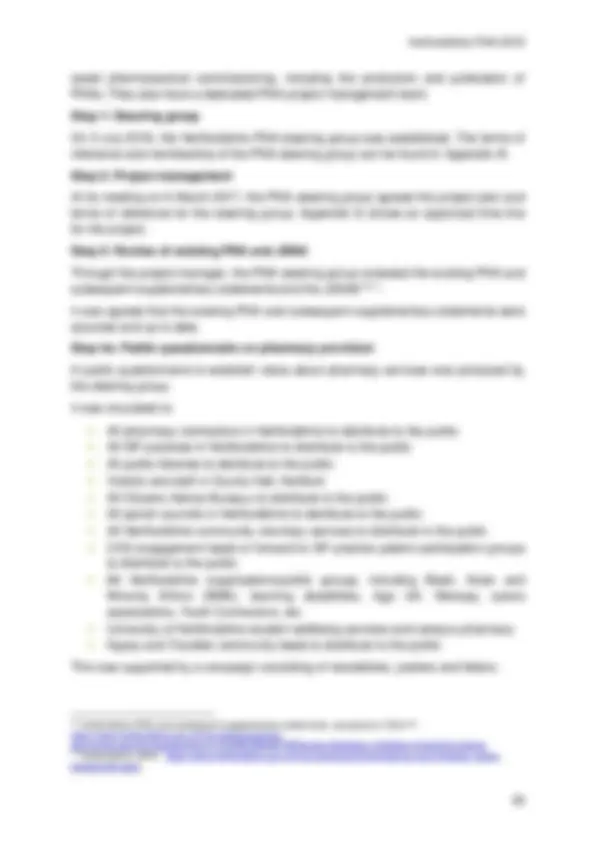
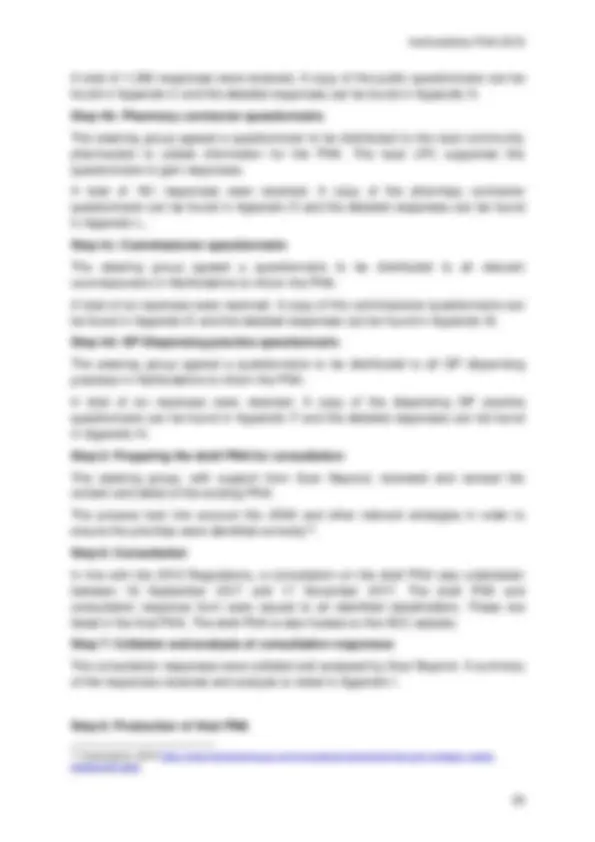
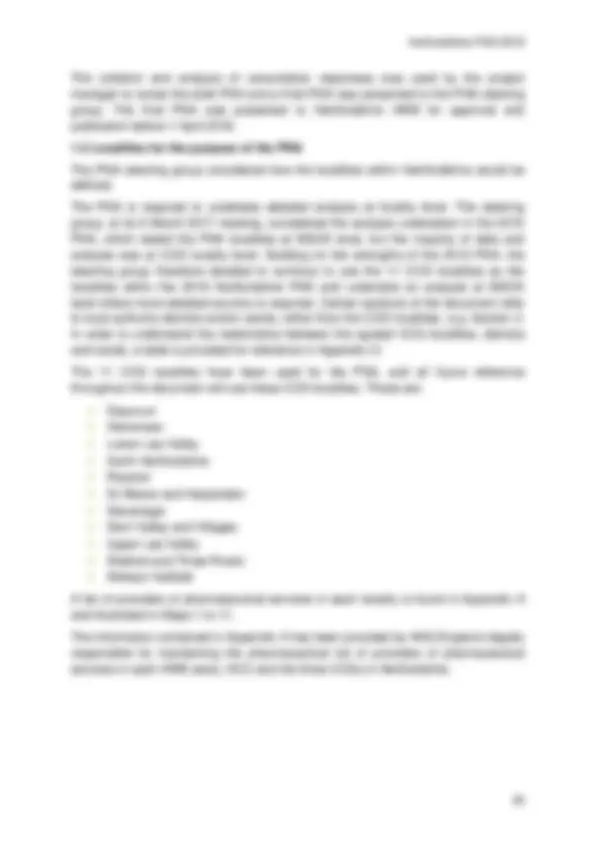
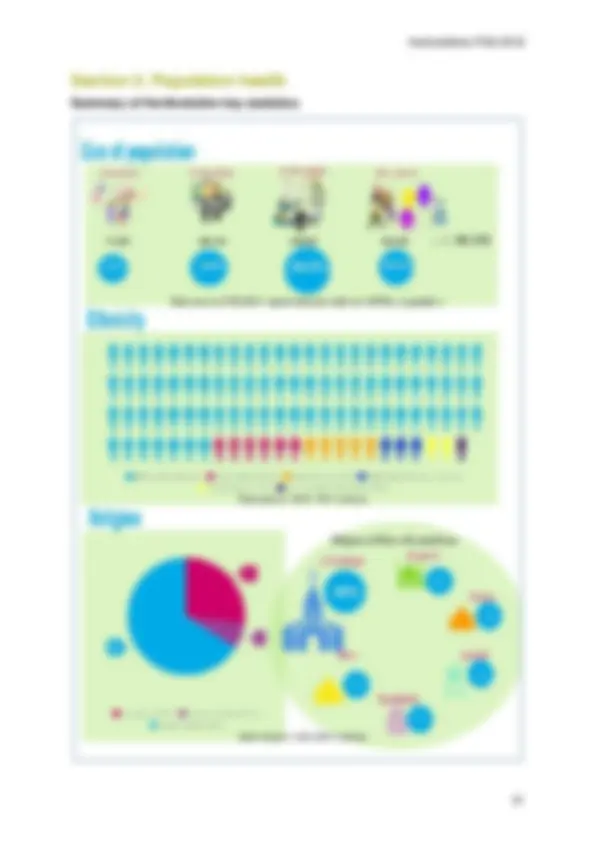




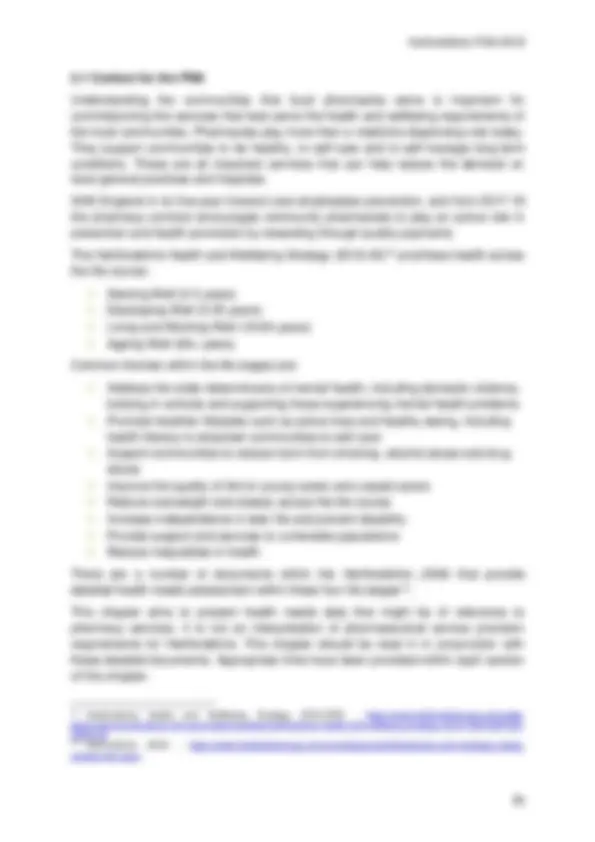


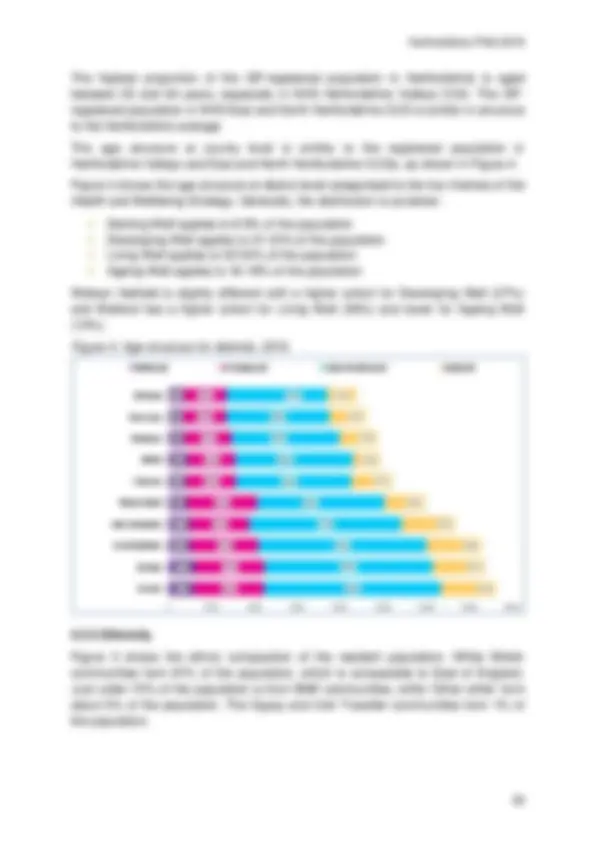
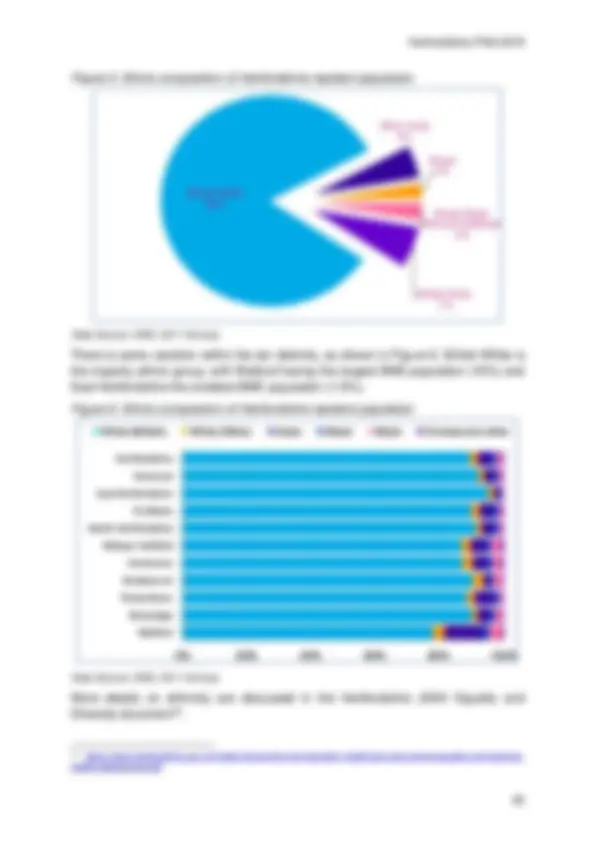
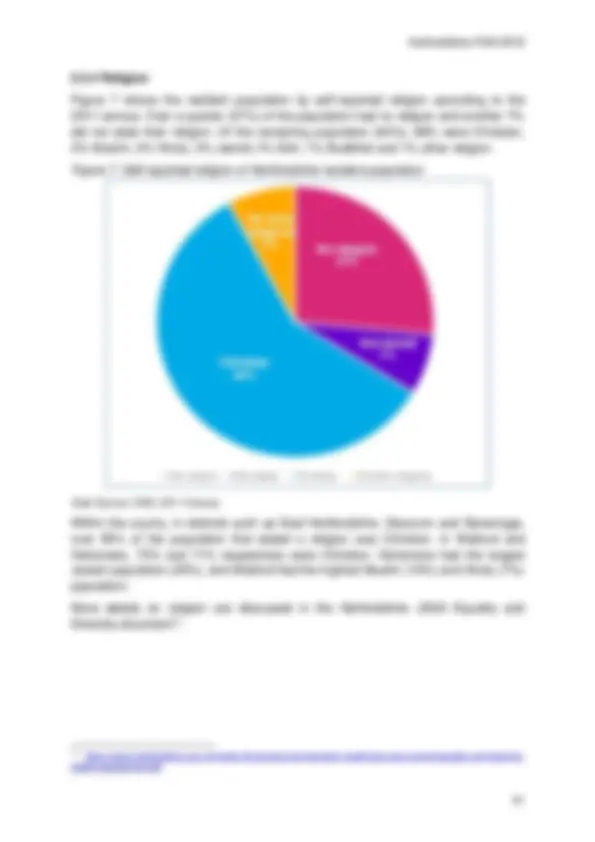
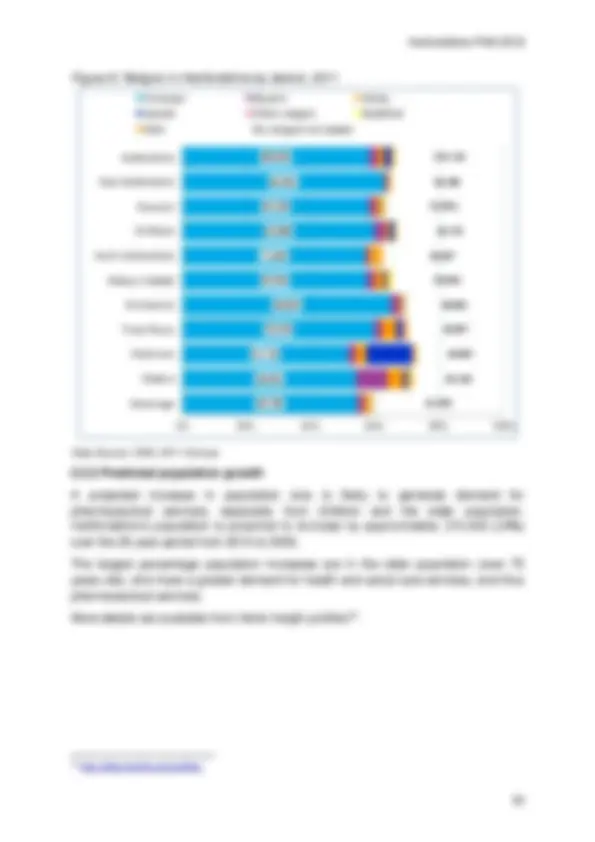
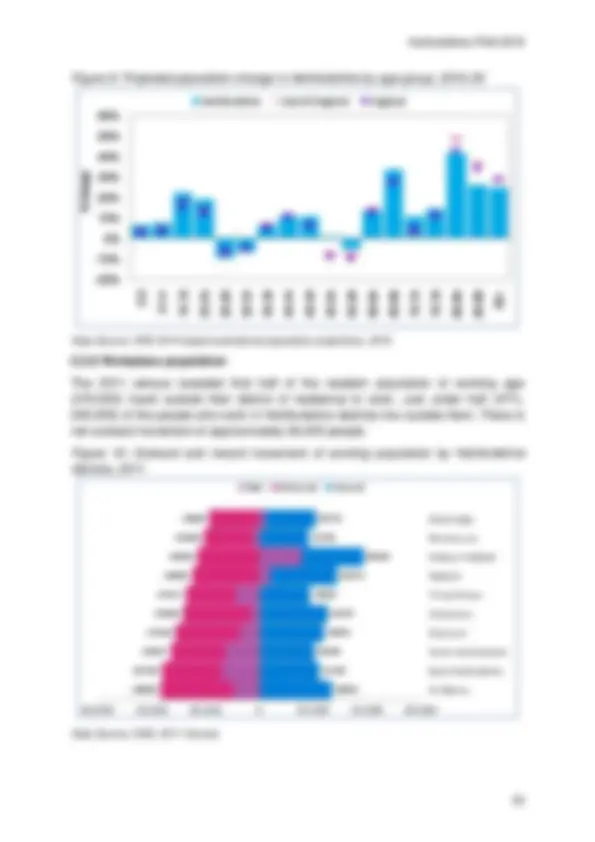
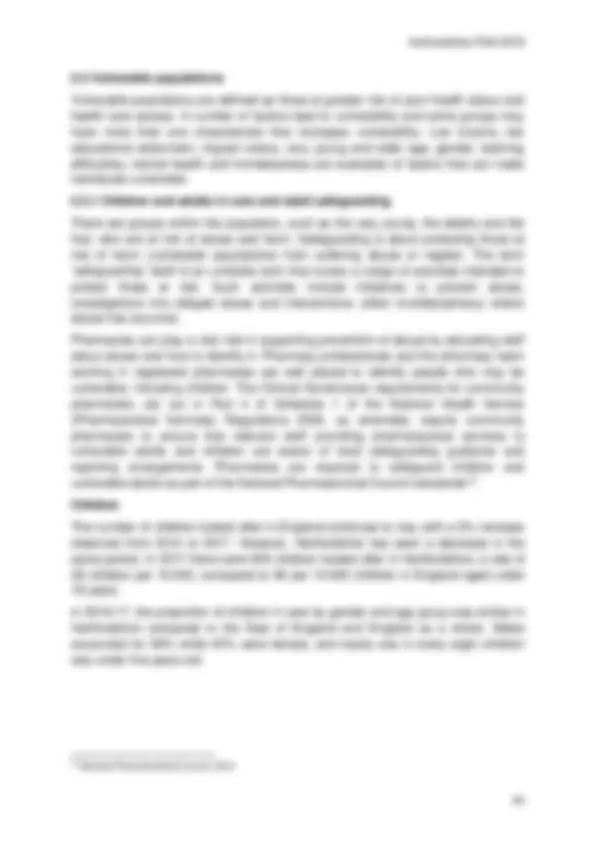
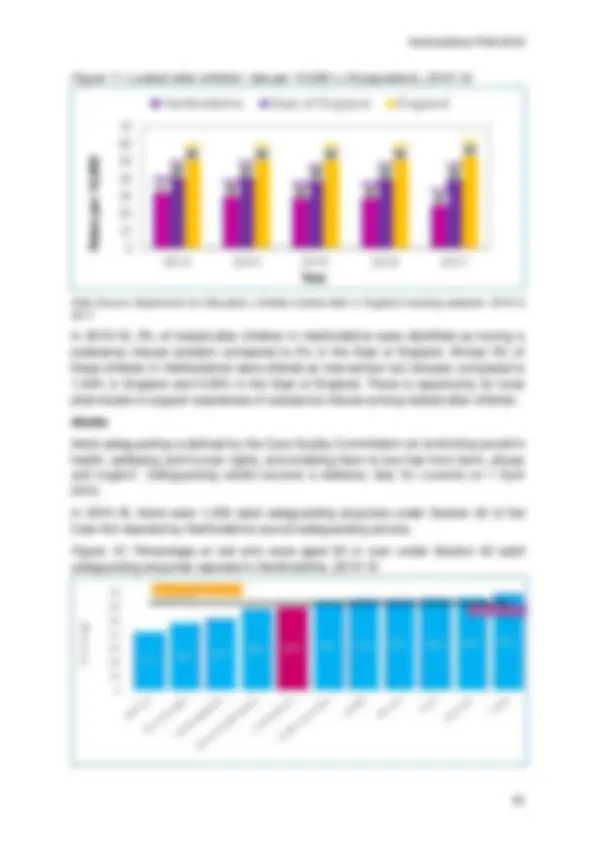
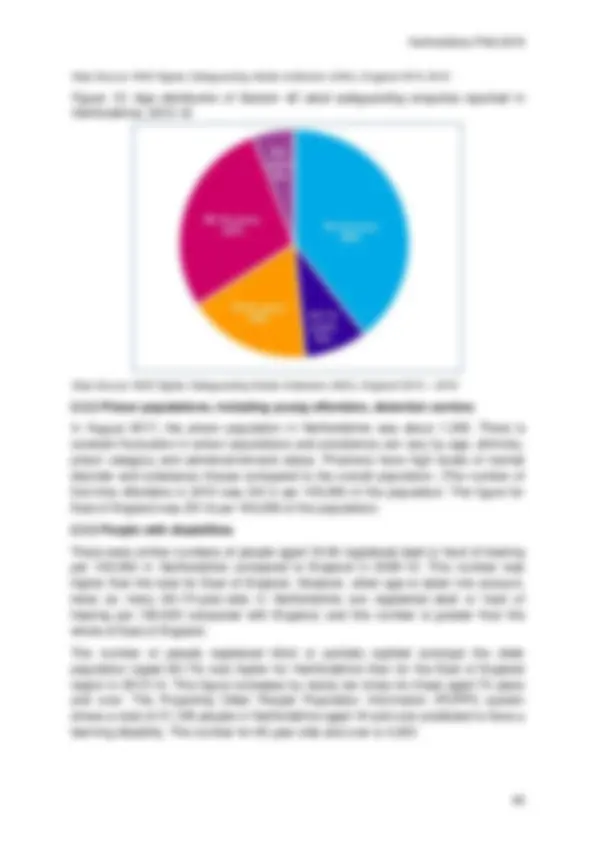


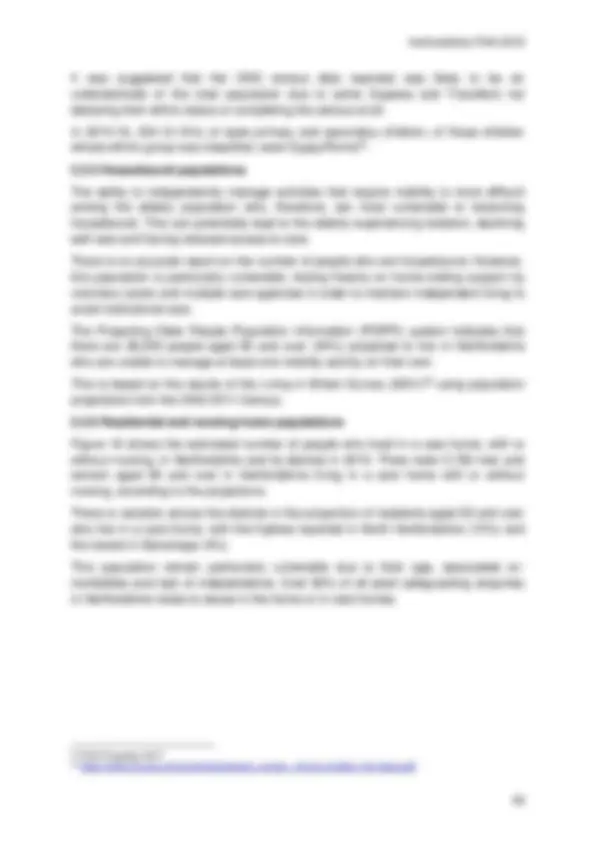
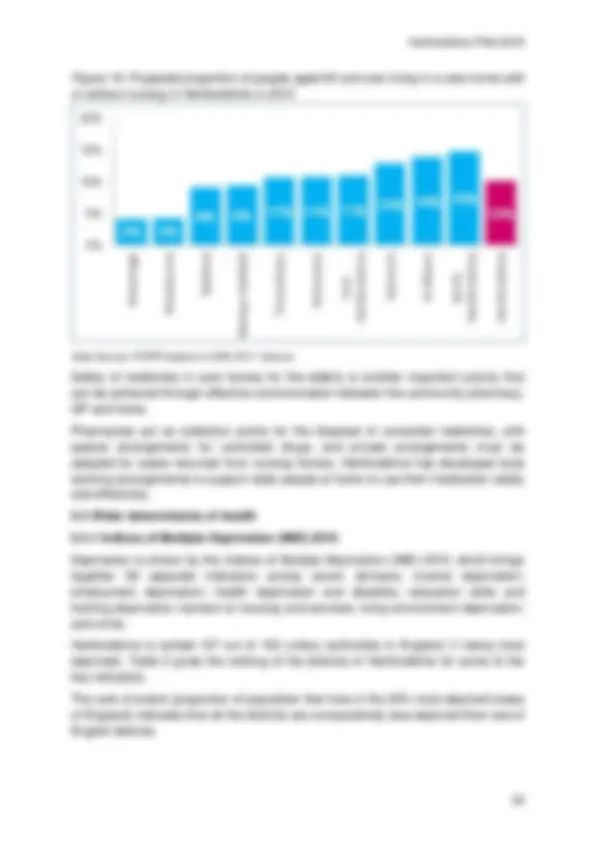
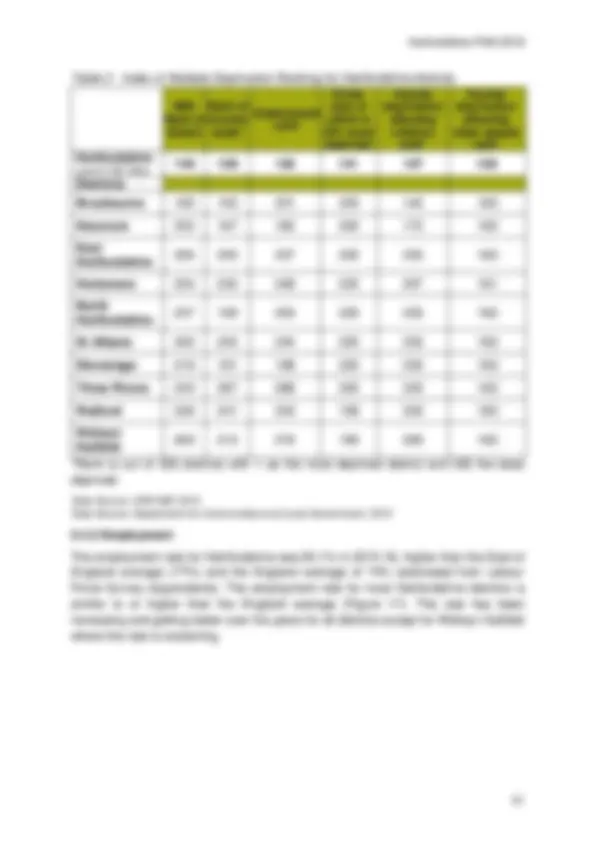
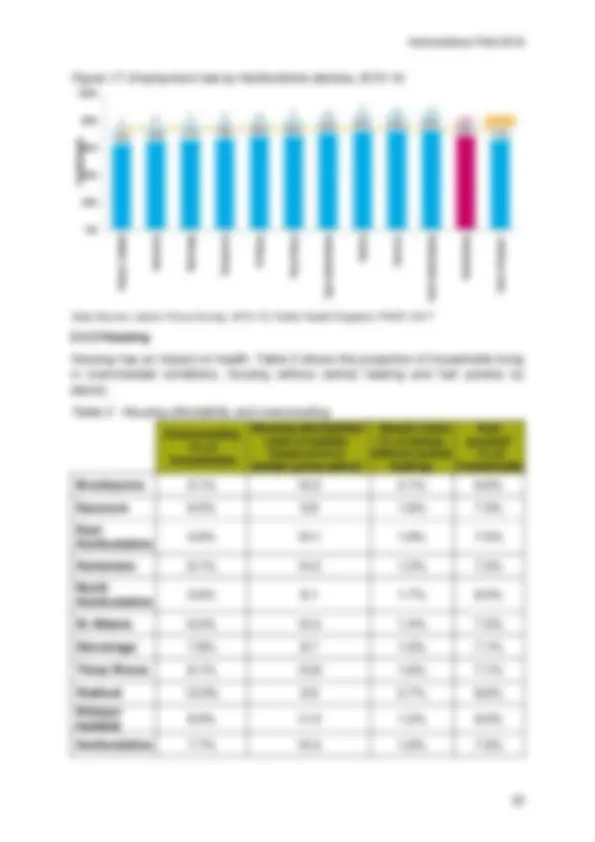
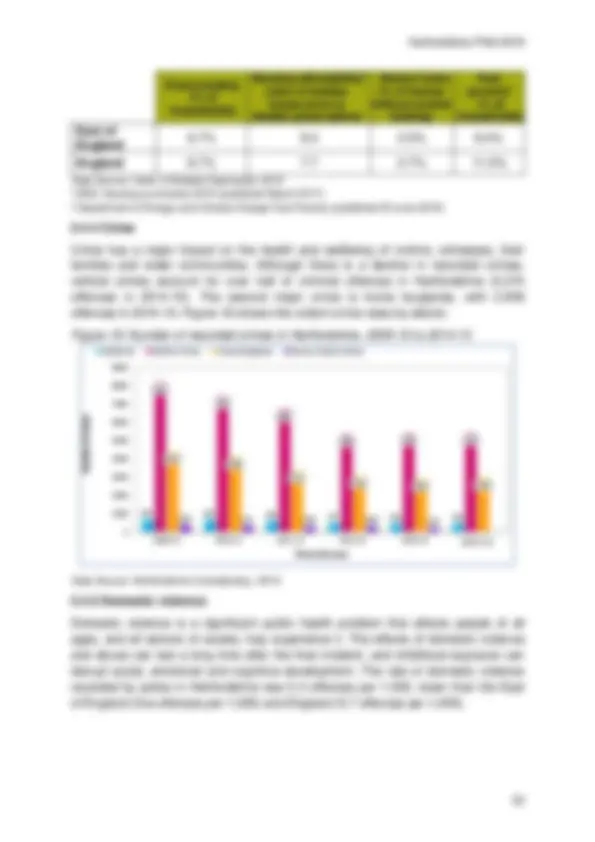
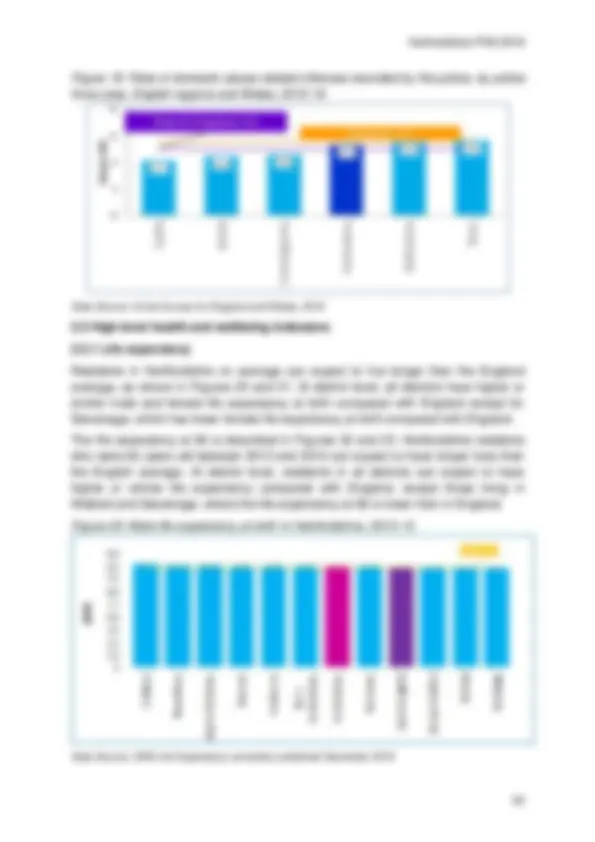
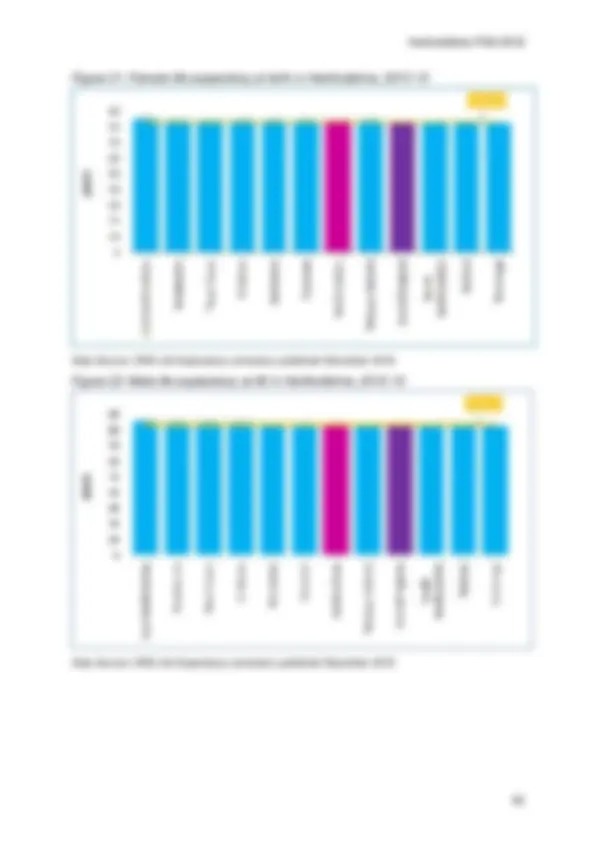
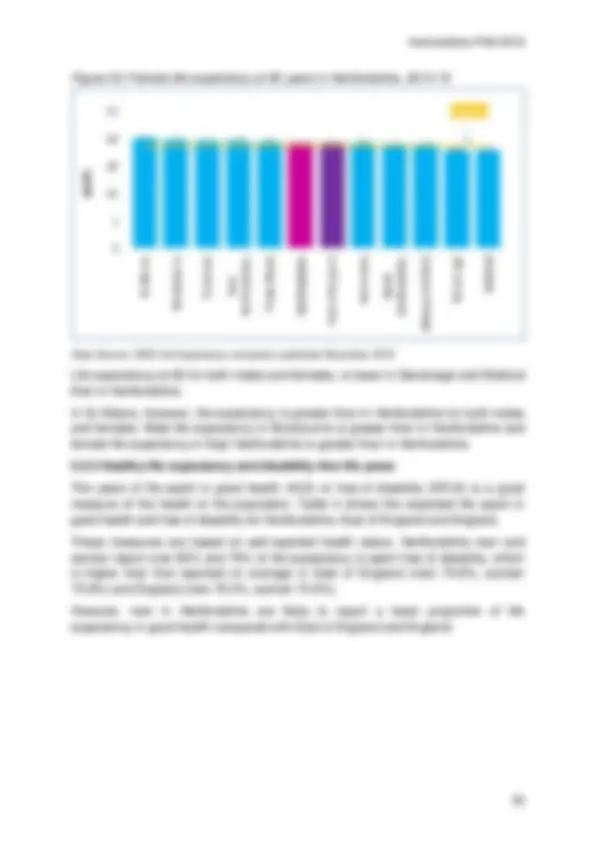
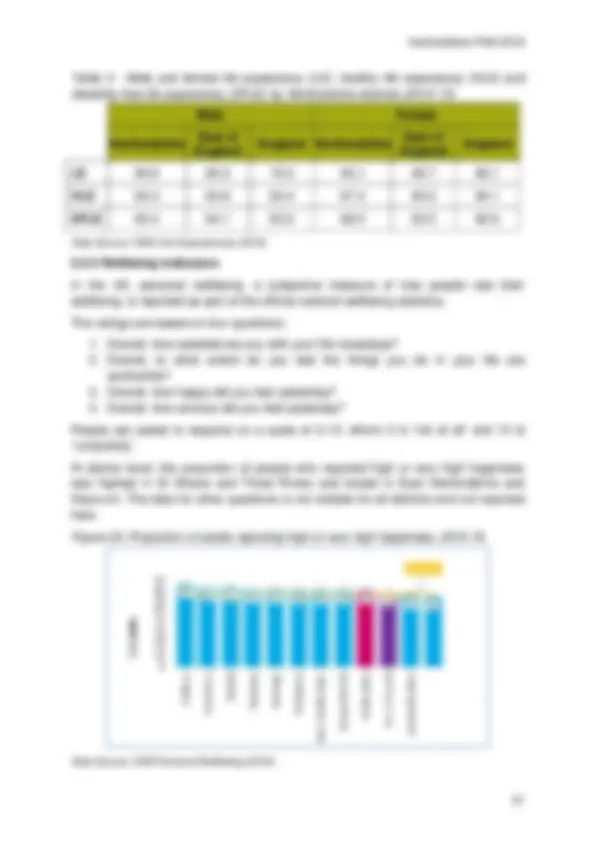
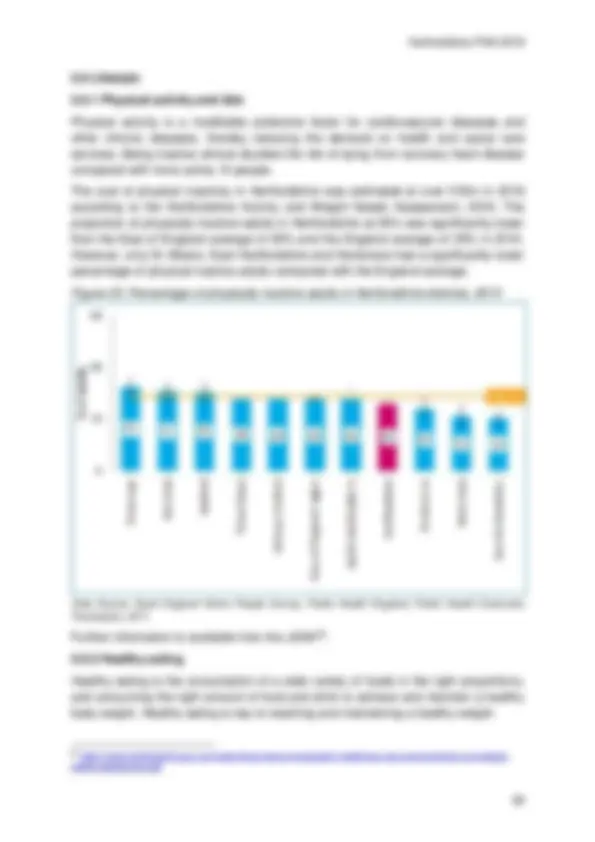
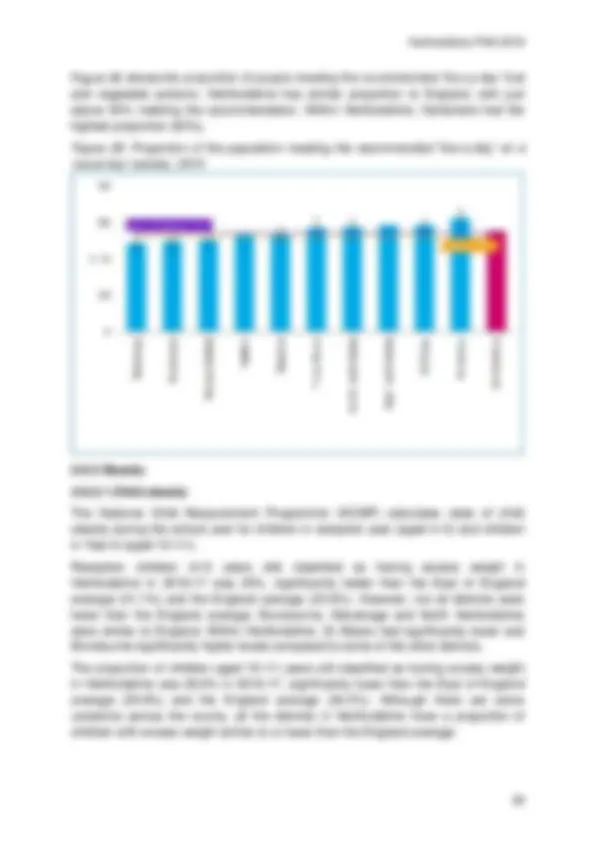
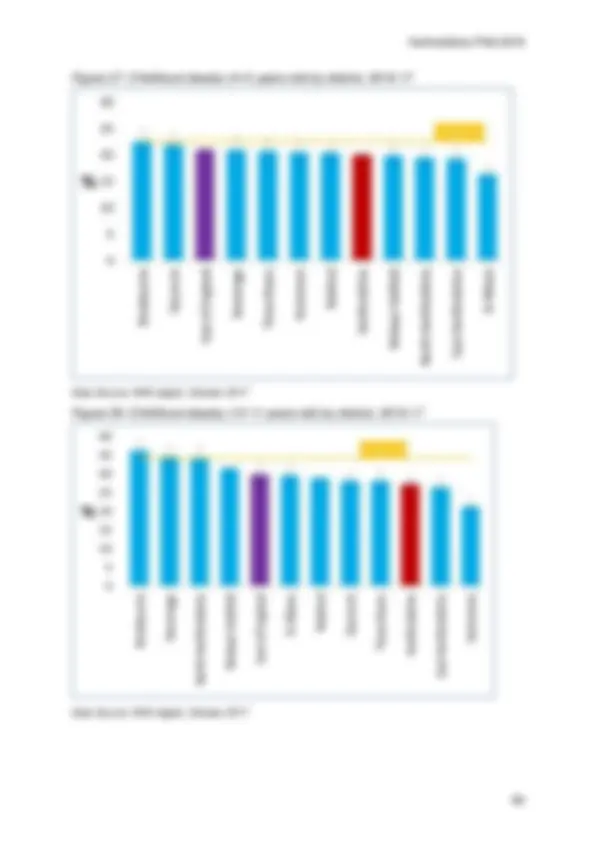
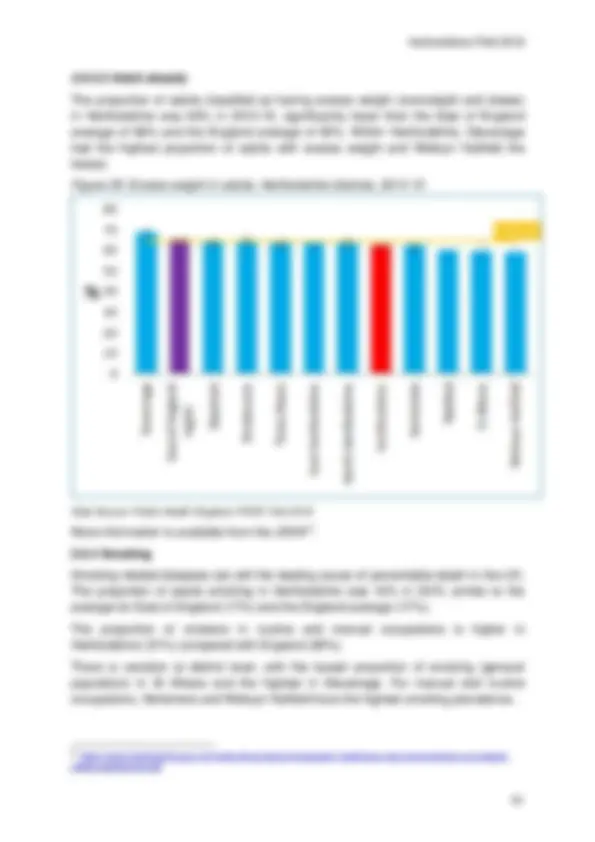
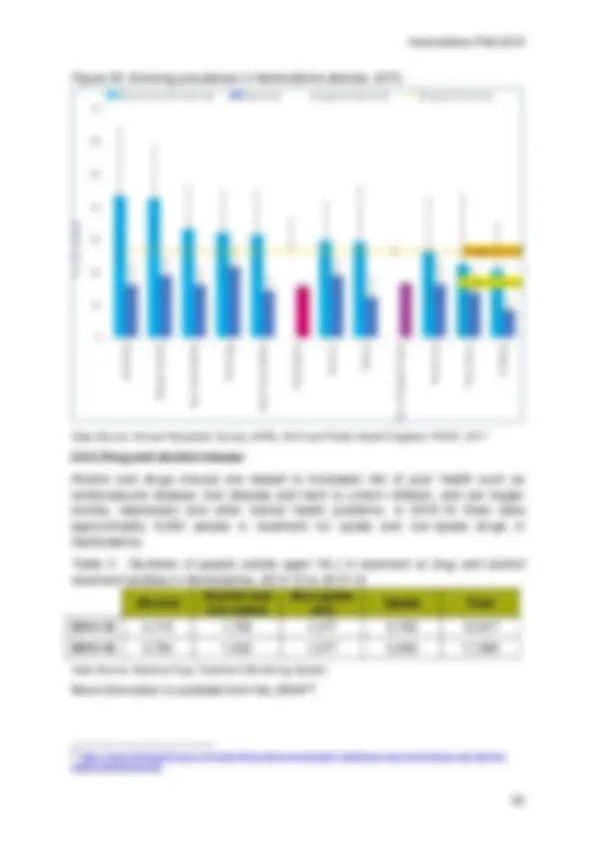
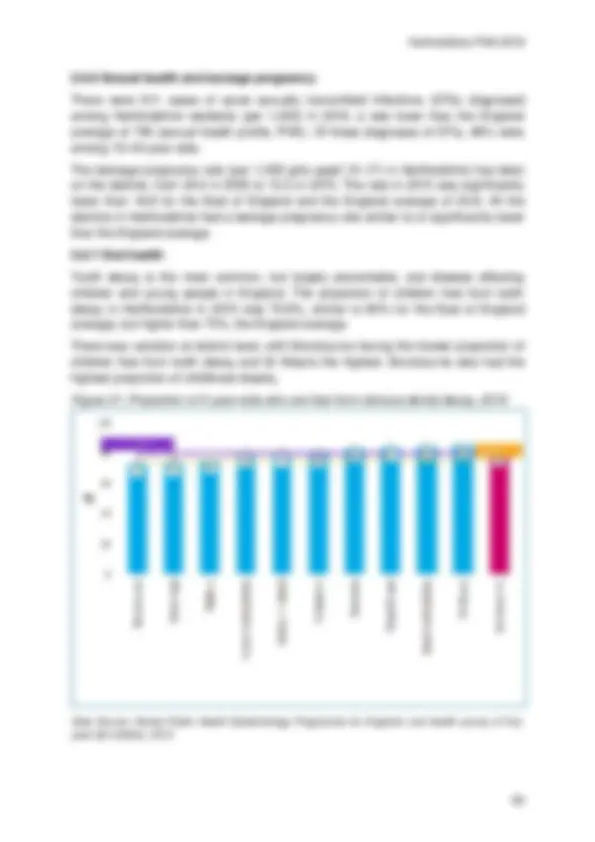
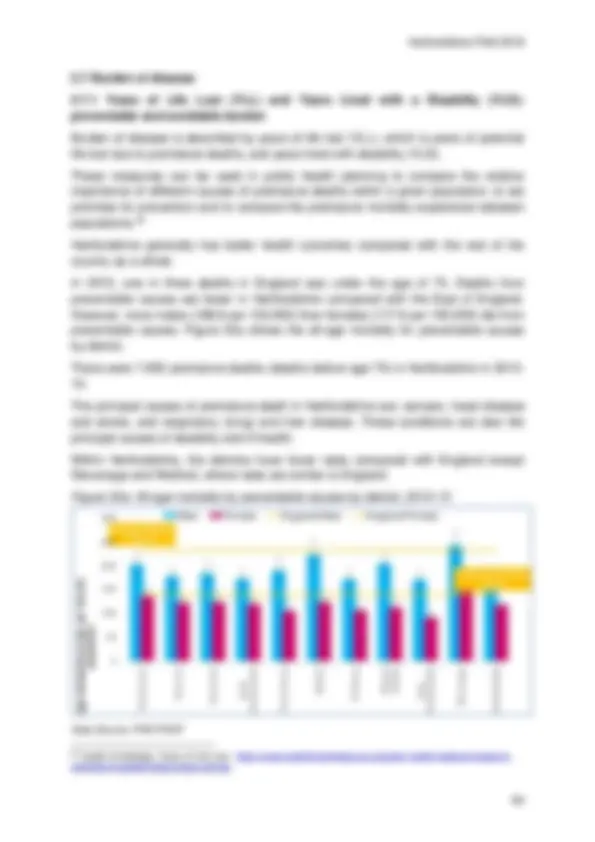
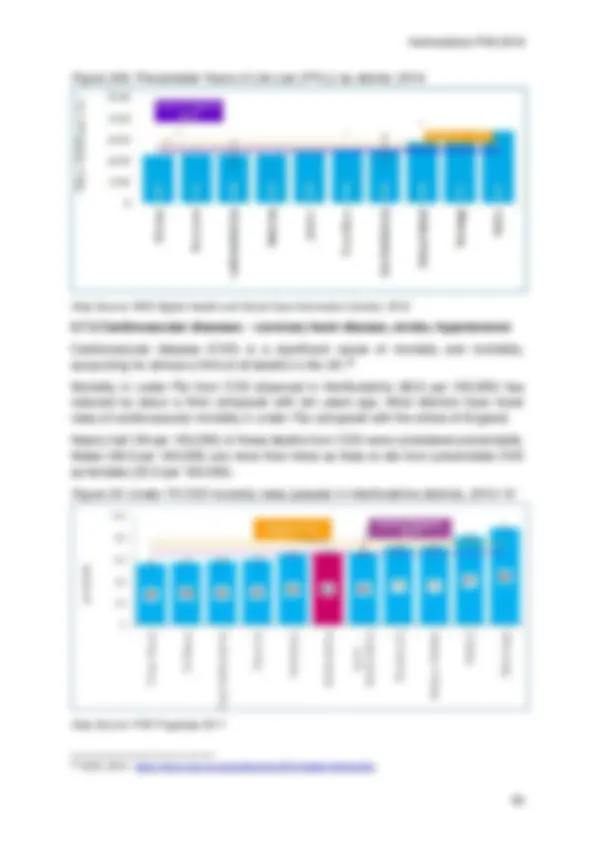
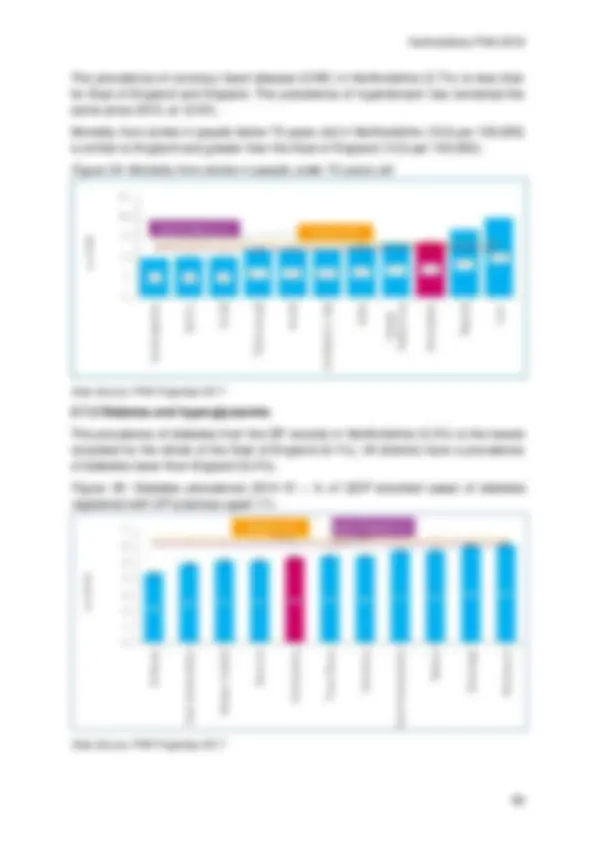
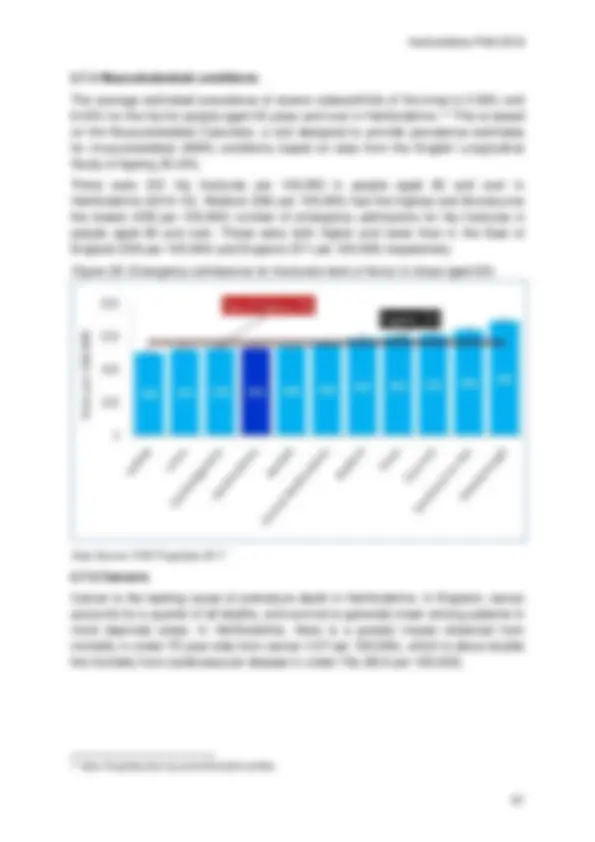
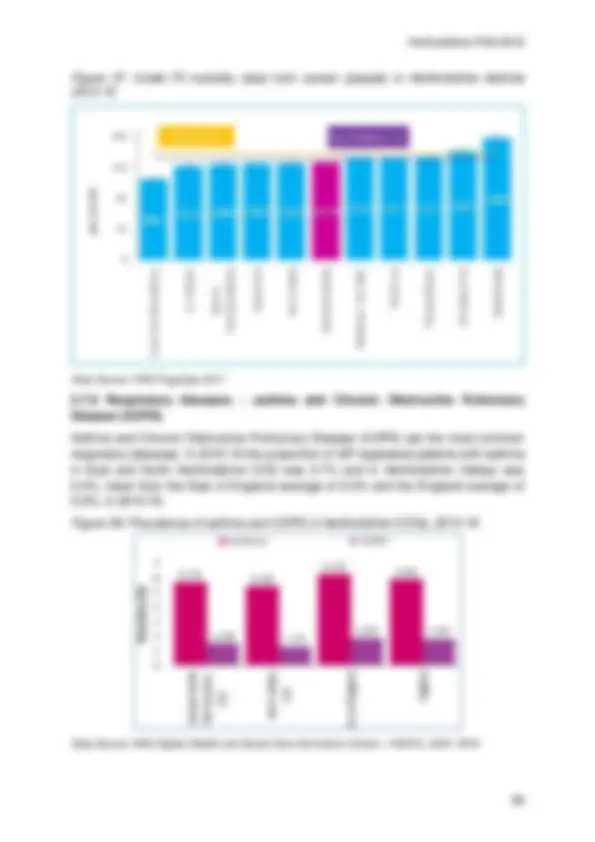
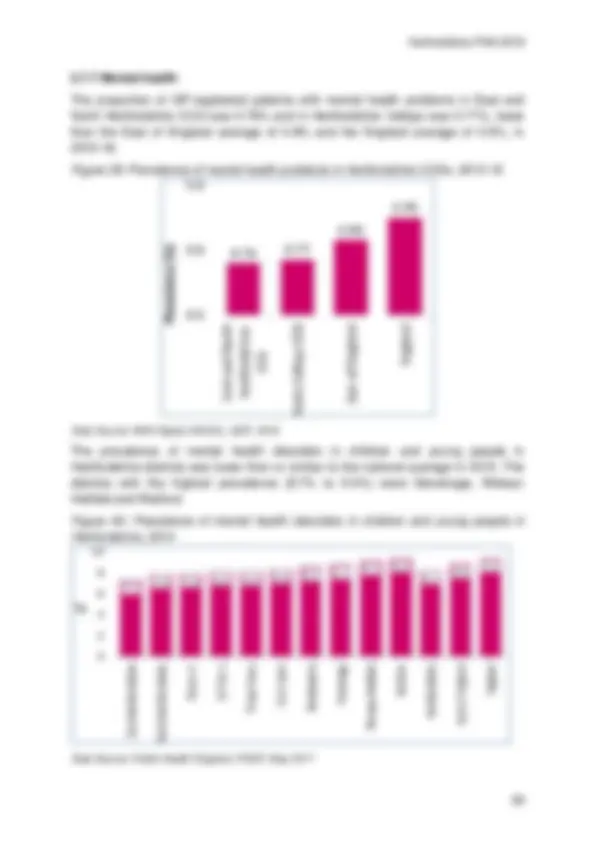
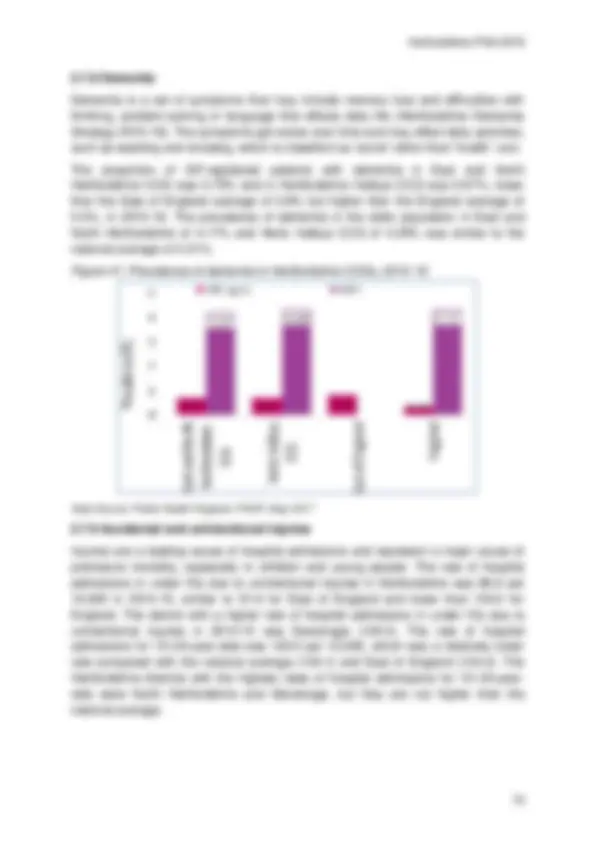
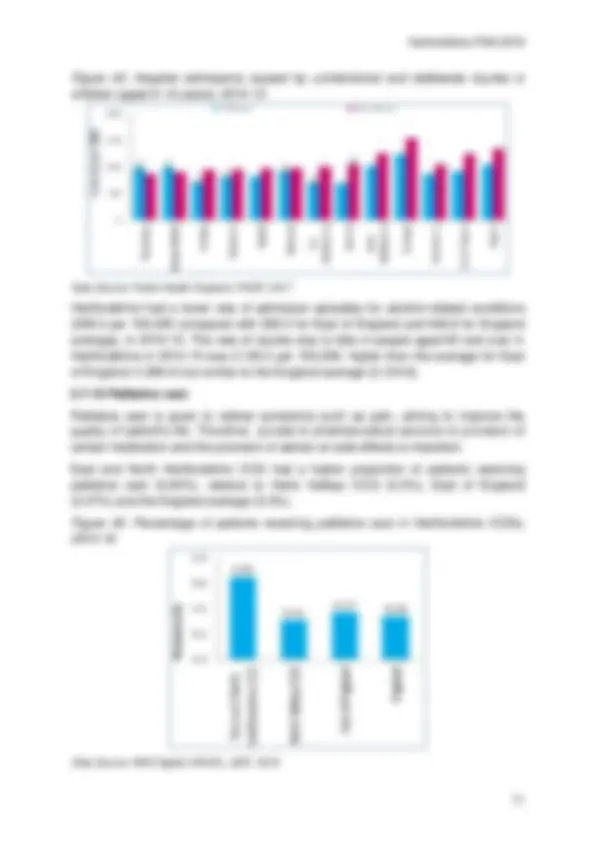
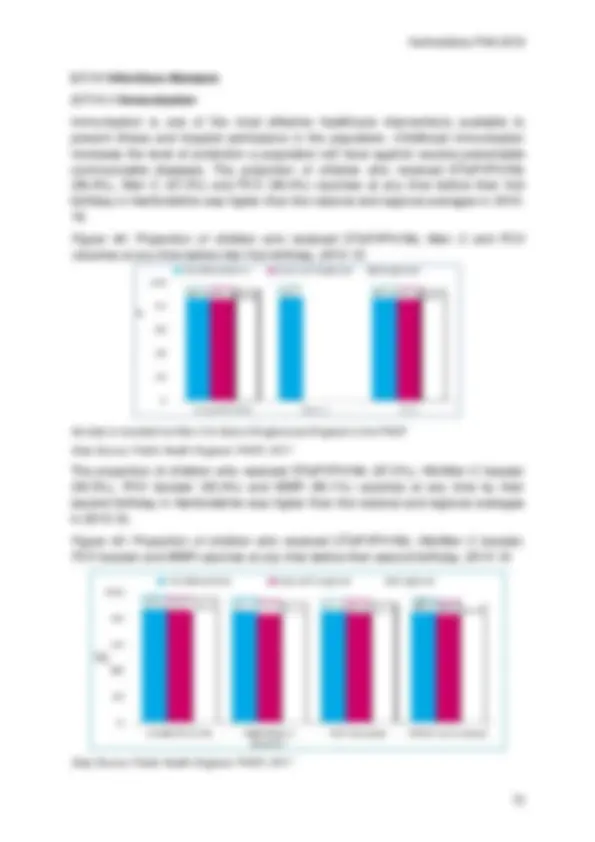

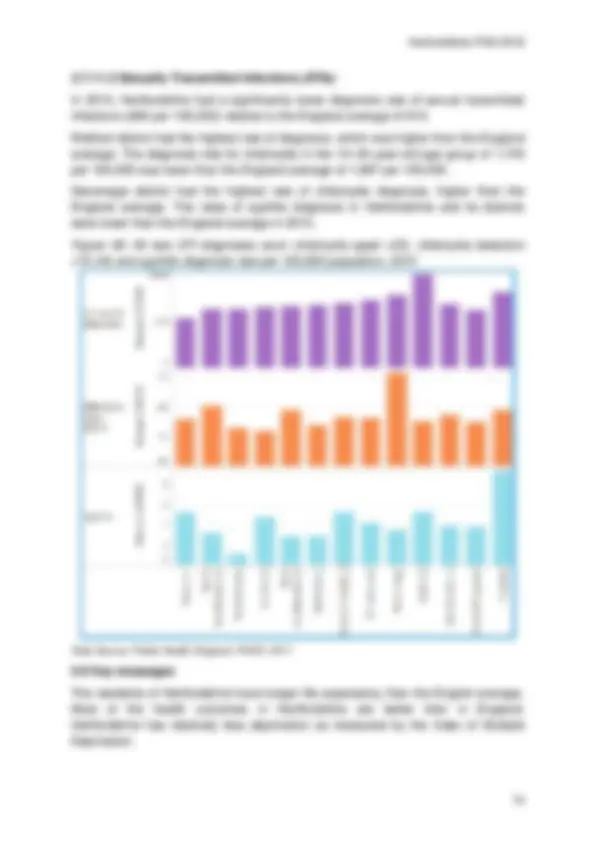

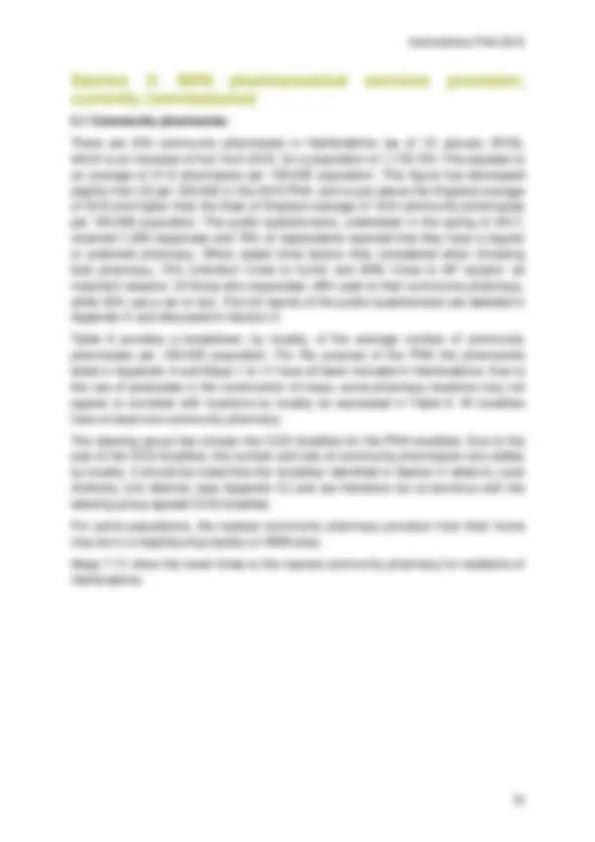

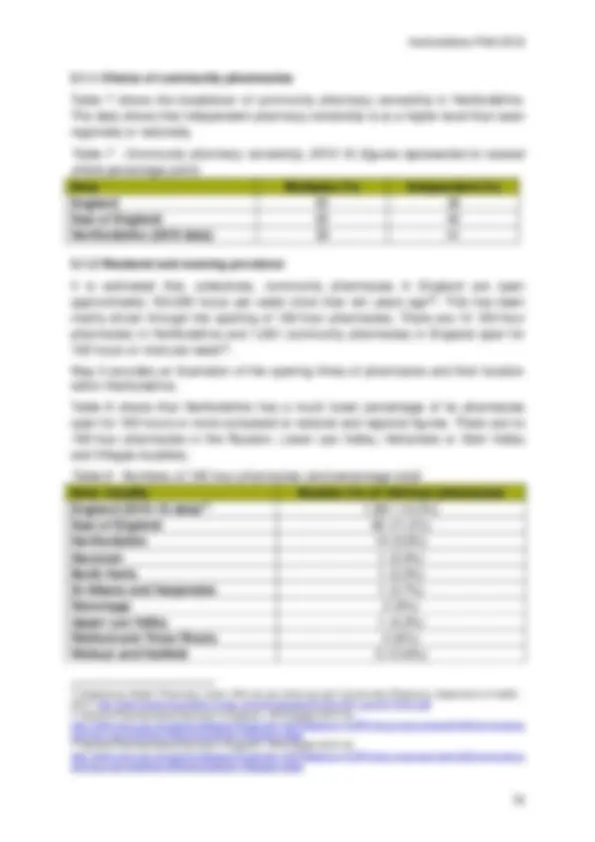
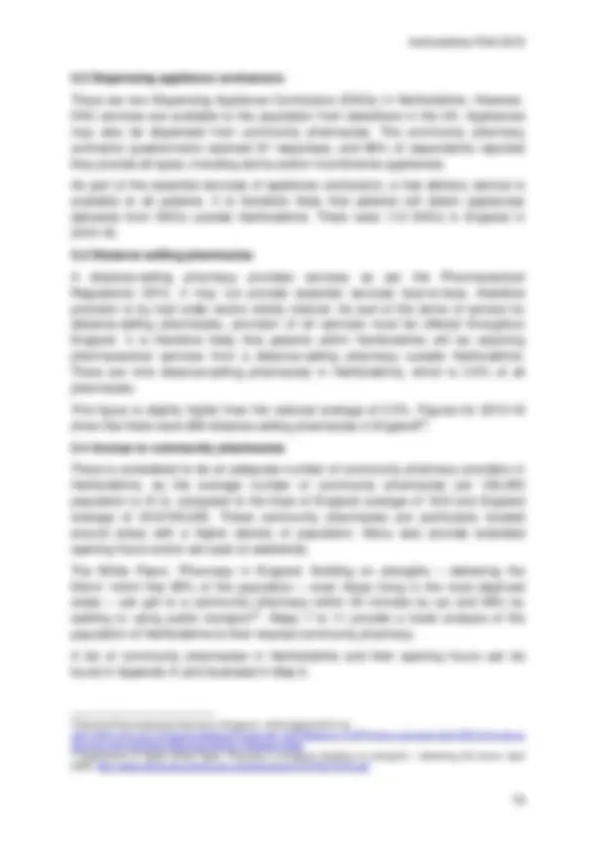
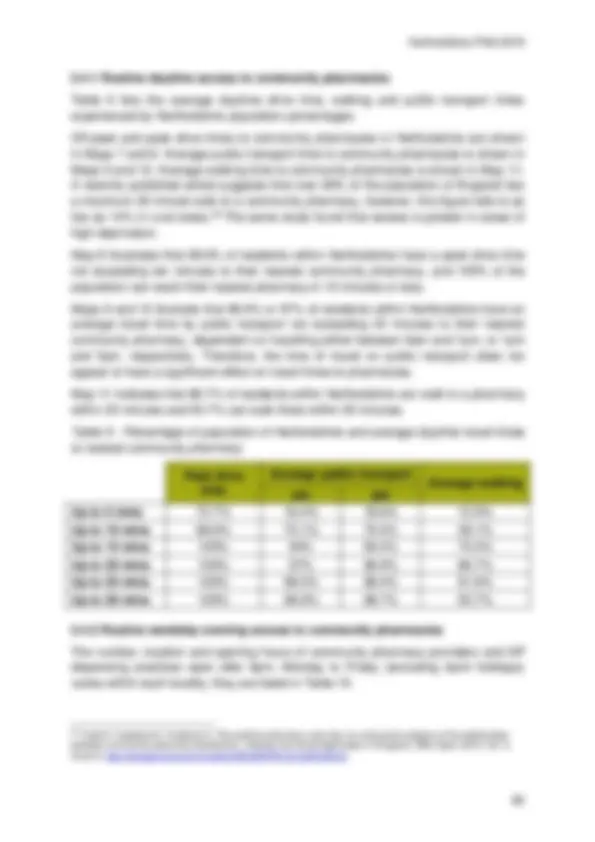
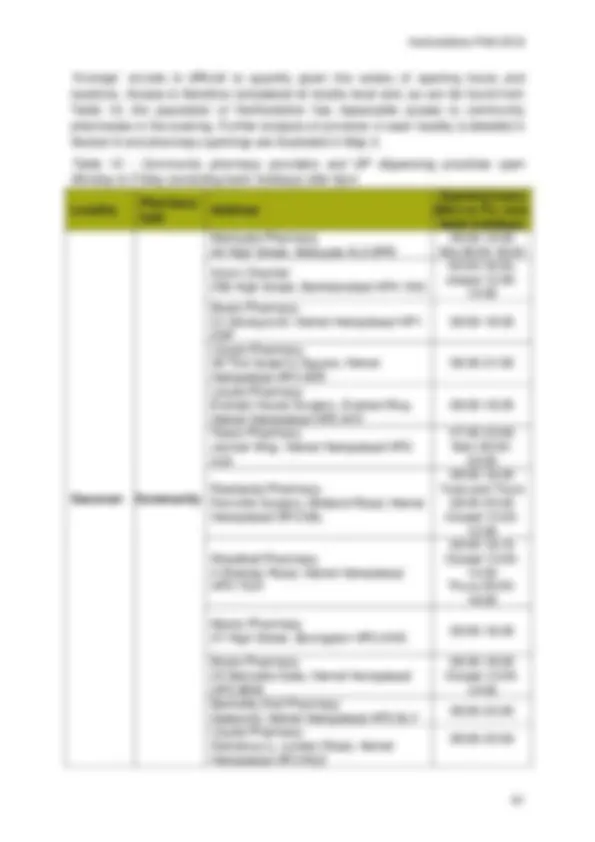
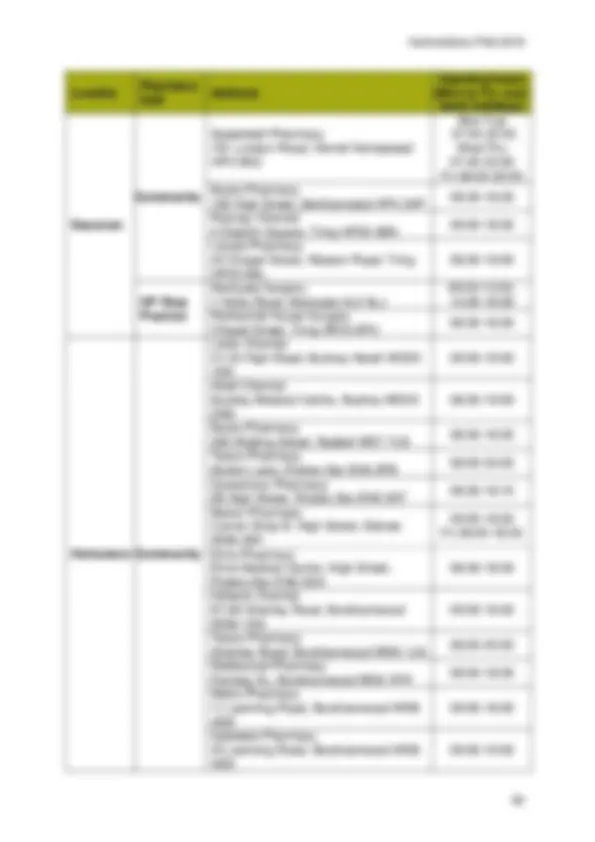
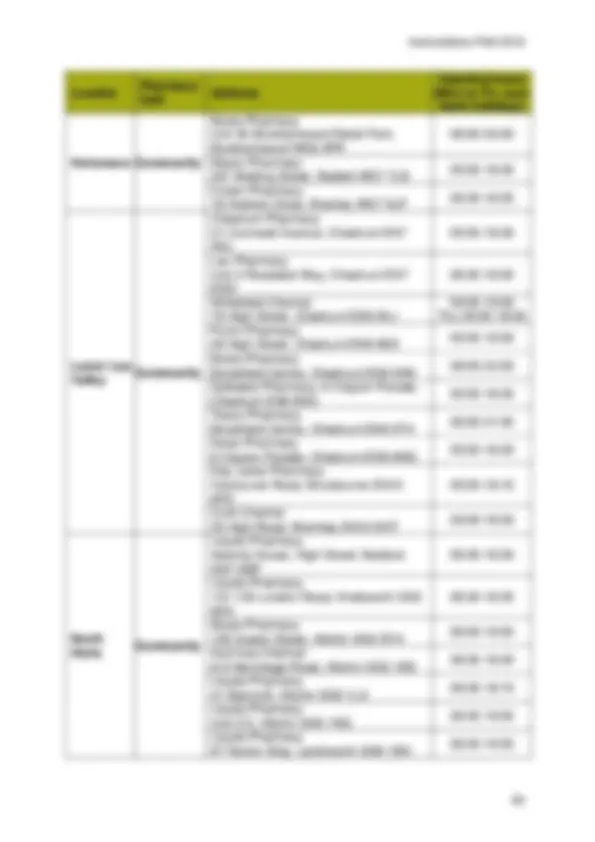
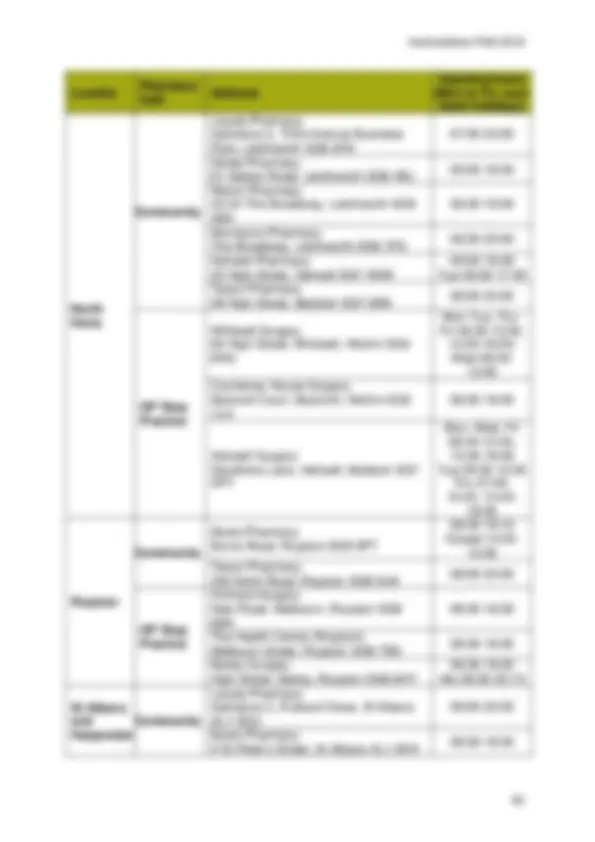
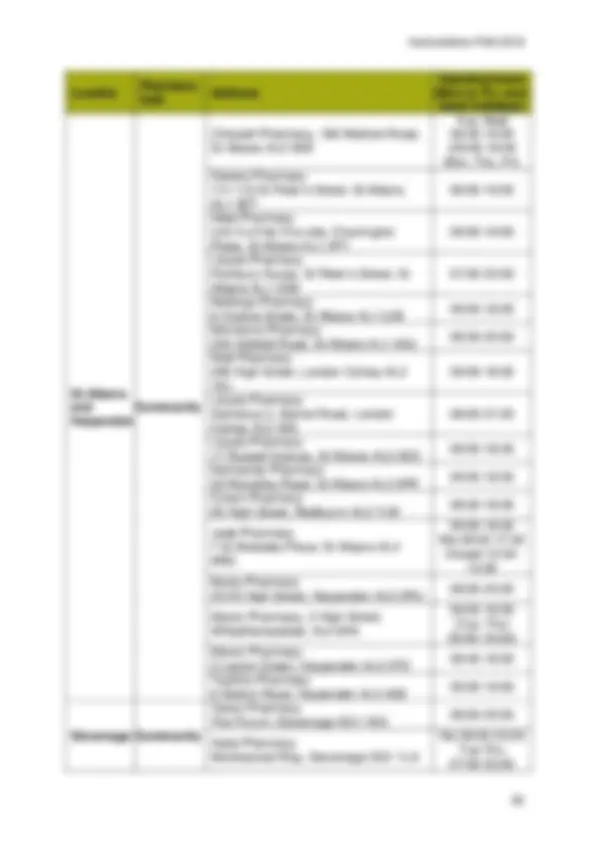
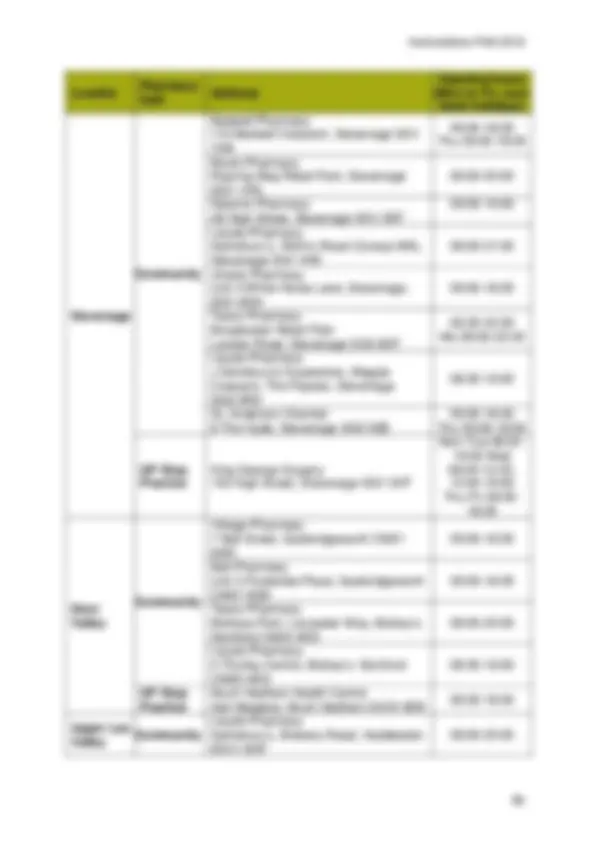
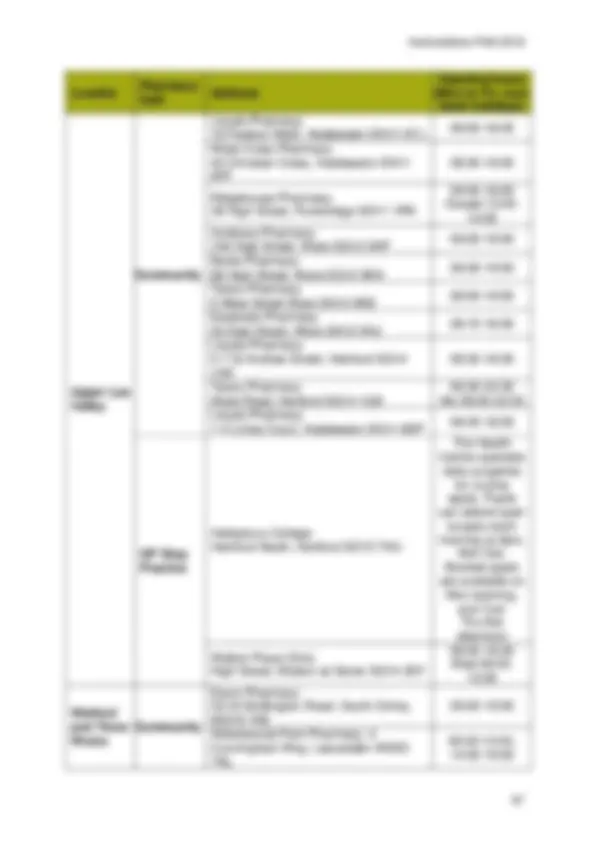
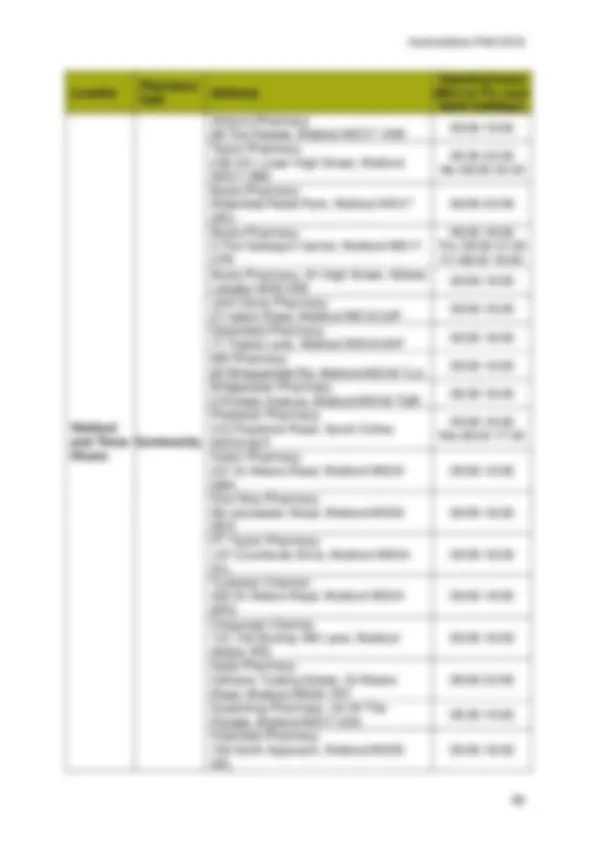
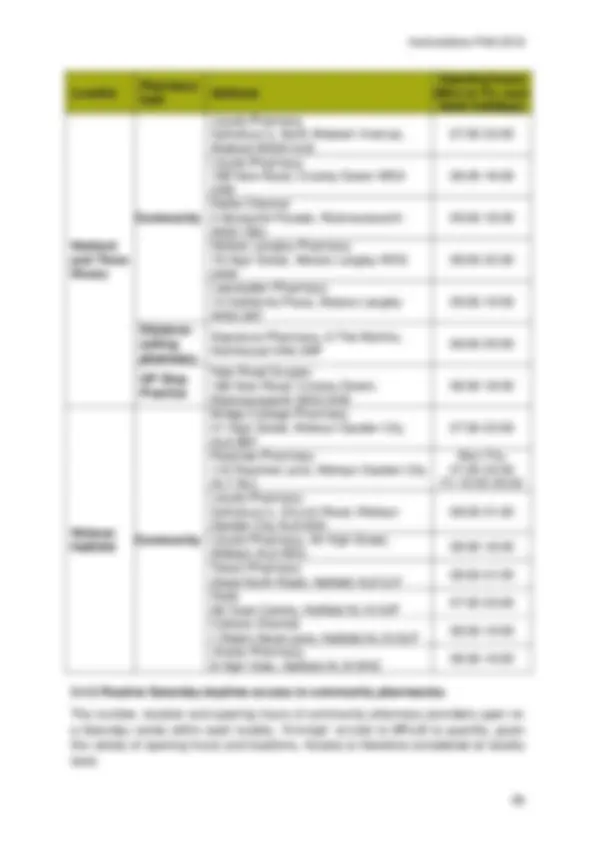
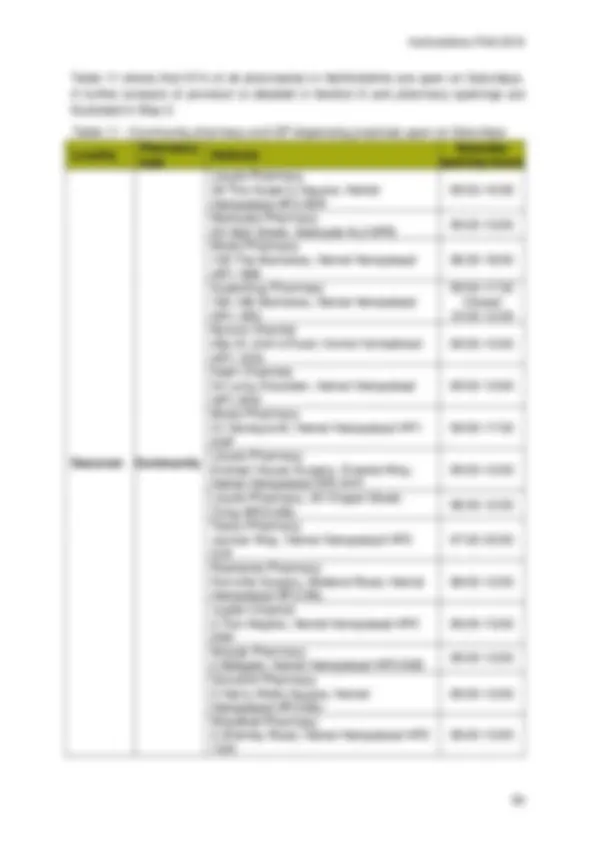
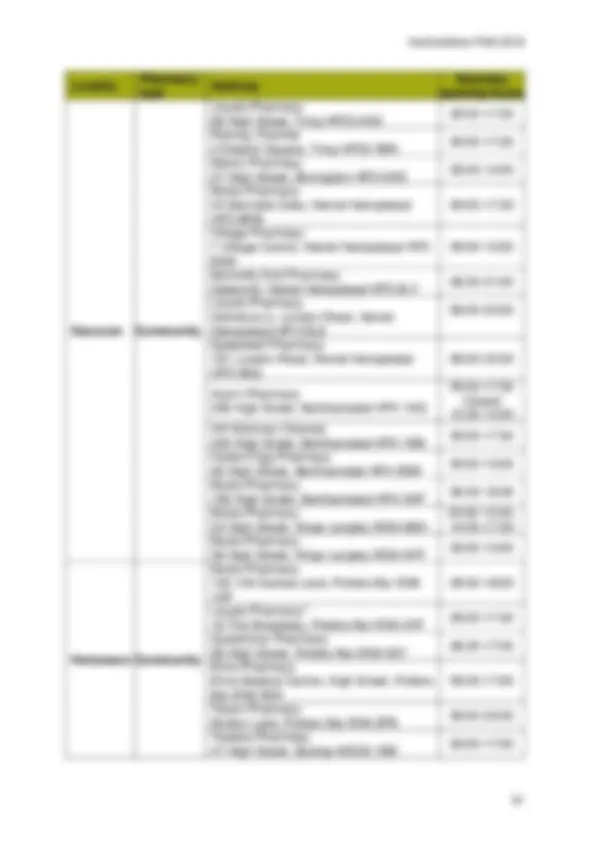
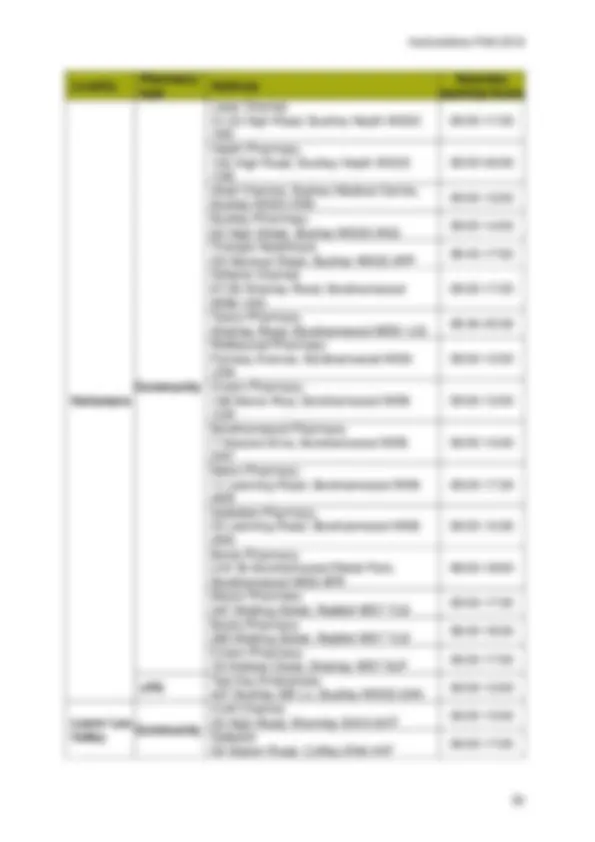


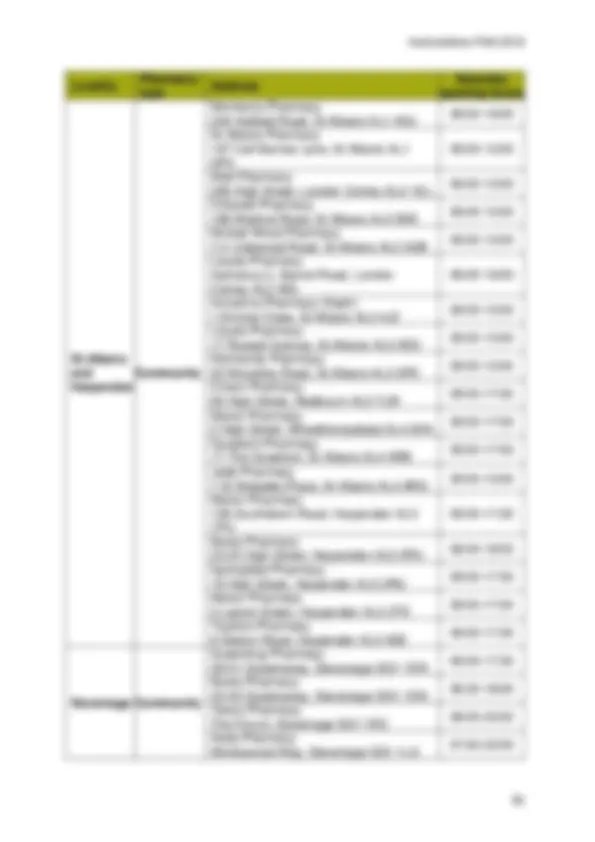
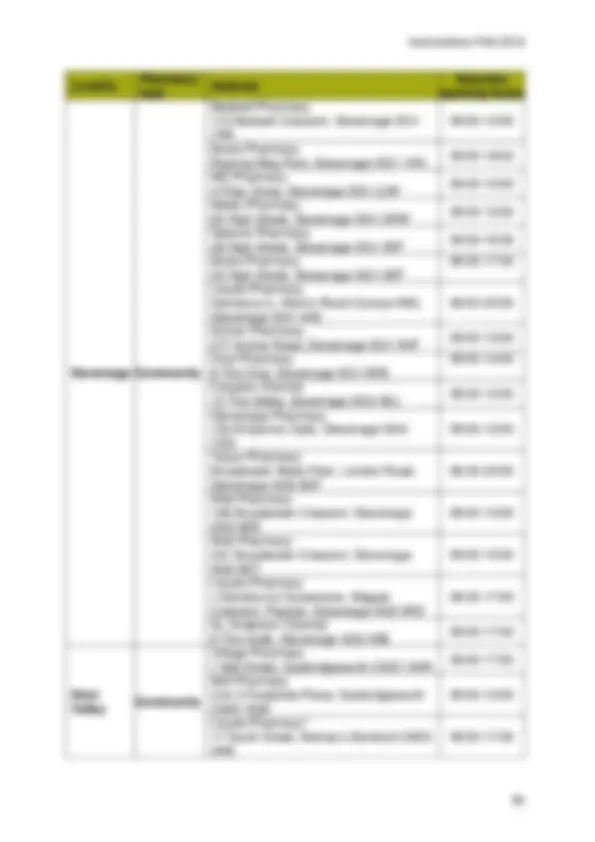
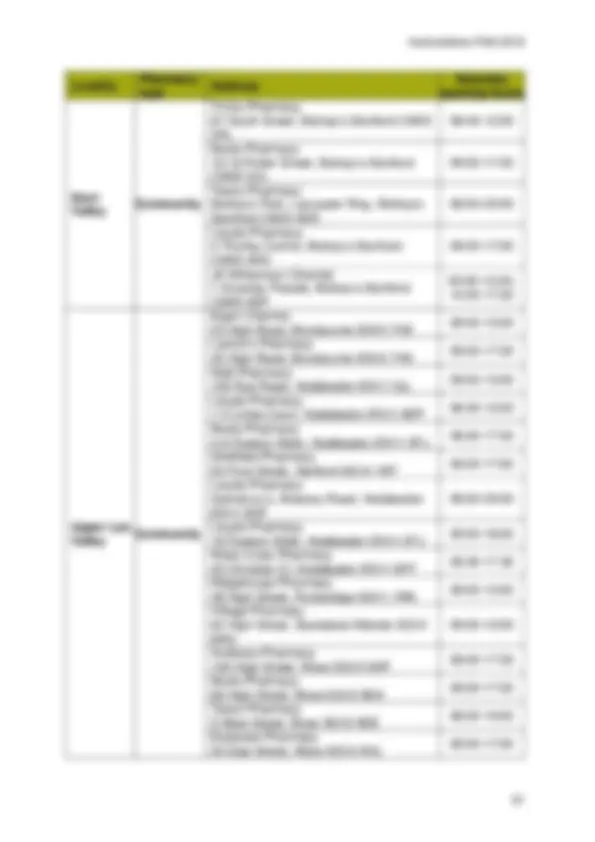
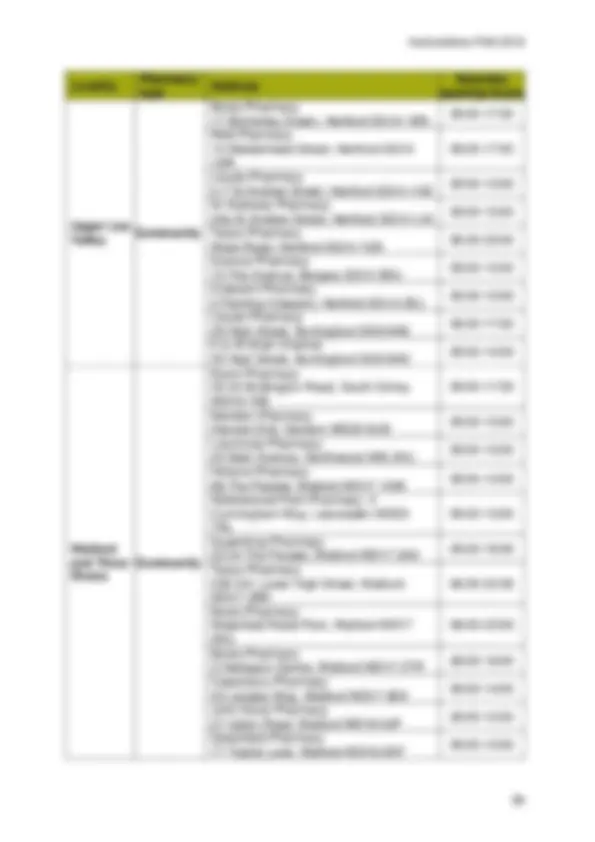
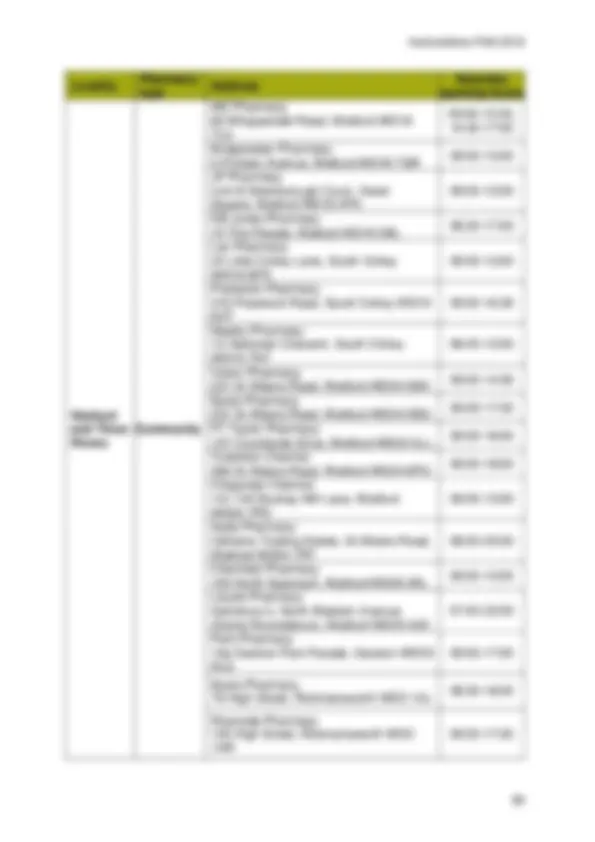


Study with the several resources on Docsity

Earn points by helping other students or get them with a premium plan


Prepare for your exams
Study with the several resources on Docsity

Earn points to download
Earn points by helping other students or get them with a premium plan
Community
Ask the community for help and clear up your study doubts
Discover the best universities in your country according to Docsity users
Free resources
Download our free guides on studying techniques, anxiety management strategies, and thesis advice from Docsity tutors
Executive summary. Every Health and Wellbeing Board (HWB) is now required to produce a. Pharmaceutical Needs Assessment (PNA).
Typology: Lecture notes
1 / 289

This page cannot be seen from the preview
Don't miss anything!





























































































This Pharmaceutical Needs Assessment has been produced by Hertfordshire County Council through a steering group on behalf of Hertfordshire Health and Wellbeing Board, with authoring support from Soar Beyond Ltd.
Every Health and Wellbeing Board (HWB) is now required to produce a Pharmaceutical Needs Assessment (PNA). This mapping of pharmaceutical services against local health needs provides the NHS England Area Team with a framework for the strategic development and commissioning of services. It will enable the local health economy to:
Enhanced services : Negotiated locally to address local health needs. Can be provided from commissioned, accredited pharmacies. This contract enables NHS England Area Teams to commission services to address local needs while still retaining the traditional dispensing of medicines and access to support for self-care from pharmacies. A service is considered as enhanced if commissioned by NHS England. If commissioned locally by other commissioners, e.g. the local authority or CCG, it is deemed to be a locally commissioned service (see Section 4 ). In addition to the three categories outlined above, the need has also been explored for other services as part of this PNA. Health in Hertfordshire The area Hertfordshire is a county in southern England. It has borders with Bedfordshire to the north, Cambridgeshire to the north-east, Essex to the east, Buckinghamshire to the west and Greater London to the south, covering an area of around 634 square miles. The population The current estimated population of Hertfordshire is 1,1 76 , 720. A projected increase in population size is likely to generate demand for pharmaceutical services, especially by children and the older population. Hertfordshire’s population is projected to increase by approximately 276,400 ( 24 %) over the 25-year period from 2014 to 2039. The largest projected population increases in Hertfordshire are expected in the over- 75 and under- 5 age groups (see Section 2). Because of the peculiarities of these age groups in terms of higher burden of disease and greater demand for services, demand for health and social care services (including primary care medicines management and prescription delivery services) is expected to increase. There are plans to develop around 10,000 new homes in Gilston Park (an area to the north of Harlow) before 2033, which will help support the growing population and demand for housing. There are also plans to provide 600 new homes to the east of Stevenage, 1,350 homes east of Welwyn Garden City and districts, 37 villages to take combined 500 new homes (see Appendix J). Hertfordshire has a lower than average proportion of minority ethnic group population ( 10 %) compared to the England average ( 20 %). The increasing population and its diversity will require planning for the delivery of services, in particular to meet its varied health and social care needs. Health inequalities Hertfordshire is ranked 137 out of 152 unitary authorities in England (one being most deprived). Hertfordshire has a mix of deprivation.
Table 1 shows the comparison with the previous PNA of community pharmacies and regional and national averages. Table 1 - Number of community pharmacies per 100,000 population Community pharmacies per 100,000 population England^ East of England Hertfordshire 2015 - 16 21.5 19 21. 6 2011 - 12 21 21 22 _This figure is an estimate and includes Dispensing Appliance Contractors and distance-selling pharmacies, therefore the figure may differ for estimates based solely on community pharmacy contractors._ Using current population estimates, the number of community pharmacies per 100,000 population for Hertfordshire is currently 21. 6 , which is just above the England average (20.8). Based on a number of factors assessed as part of the PNA, Hertfordshire is currently well served with community pharmacies. There are 1 33 ( 52 %) community pharmacies in Hertfordshire open on weekday evenings after 6pm, and the majority 230 ( 91 %) are open on Saturdays. There are also 60 open on Sundays ( 24 %), mainly in shopping areas. There are 16 pharmacies contracted to open 100 hours a week in Hertfordshire. Independent providers represent 59 % of the total providers in Hertfordshire compared to the national average of 62%. Feedback on pharmaceutical services Views of pharmacy service users were gained from a questionnaire circulated for comments from the general public. From the 1 , 390 responses received from the public questionnaire:
Advanced services Based upon a number of factors including population density, access to pharmacies providing advanced services, and the results of the public questionnaire (although not necessarily statistically representative), the assessment concluded that there is no identified gap in the provision of advanced services. Medicines Use Reviews (MURs) are available on average in 92% of pharmacies, New Medicine Service (NMS) in 89% and flu vaccination in 78 % (2016-17 data). There is good provision of these advanced services across each CCG locality, with some CCG localities having 100% of contractors providing the services (See Sections 2, 3, 5 and Appendix A). There are no current gaps in the provision of advanced services across Hertfordshire to meet the needs of the population. Enhanced services There has been no identified current need for any specific enhanced services in Hertfordshire. A number of enhanced services currently provided are detailed in the full document, however a full analysis has not been conducted on which enhanced services might be of benefit as this is out of the scope of the PNA. There are currently no identified gaps in the provision of enhanced services across Hertfordshire to meet the needs of the population. Future provision of necessary services Based upon responses to the public, pharmacy contractor, commissioner and GP Dispensing Practice questionnaires, the PNA has not identified any pharmaceutical services that are not currently provided but that will, in specified future circumstances, need to be provided in order to meet a need for pharmaceutical services in any of the 11 CCG localities (See Appendices K, L, M and N). There are no current gaps in the need for pharmaceutical services in specified future circumstances that have been identified across Hertfordshire to meet the needs of the population.
Improvements and better access – gaps in provision As required by Paragraph 4 of Schedule 1 to the Pharmaceutical Regulations 2013 : Current and future access to essential services Based upon a number of factors including population density, access to pharmacies (including extended hours), and the results of the public questionnaire (although not necessarily statistically representative), the assessment has not identified any services that would, if provided either now or in future specified circumstances, secure improvements or better access to essential services in any of the 11 CCG localities (see Sections 2, 3, and 5 and Appendix A). No current gaps have been identified in essential services that, if provided either now or in the future, would secure improvements or better access to essential services across Hertfordshire to meet the needs of the population. Current and future access to advanced services In 2015 - 16 MURs, NMS and flu vaccination (2016-17 data) services were available in pharmacies across all CCG localities. Where applicable, all pharmacies and pharmacists should be encouraged to become eligible to deliver advanced services in all pharmacies across all CCG localities. This will mean that more eligible patients are able to access and benefit from these services. Demand for the appliance advanced services – Stoma Appliance Customisation (SAC) and Appliance Use Reviews (AURs) – is lower than for the other two advanced services due to the much smaller proportion of the population that may require the services. Pharmacies and Dispensing Appliance Contractors (DACs) may choose which appliances they provide and may also choose whether or not to provide the two related advanced services. The PNA would encourage those contractors that do provide appliances to become eligible to deliver these advanced services where appropriate. There are no current gaps in the provision of advanced services at present or in the future that would secure improvement or better access to advanced services across Hertfordshire to meet the needs of the population. Current and future access to enhanced services NHS England does not currently commission any enhanced services from pharmacies in Hertfordshire.
Locally Commissioned Services (LCS) With regard to enhanced services and Locally Commissioned Services (LCS), the PNA is mindful that only those commissioned by NHS England are regarded as pharmaceutical services. The absence of a particular service being commissioned by NHS England is, in some cases, addressed by a service being commissioned through HCC, as in the case of sexual health or stop smoking services. HCC also commissions a needle exchange and supervised consumption of opiates via CGL Spectrum, who in turn contracts local community pharmacies to provide these services. Hertfordshire has three different Clinical Commissioning Groups (CCGs) within its boundary, namely East and North Hertfordshire CCG, Herts Valleys CCG, and Cambridge and Peterborough CCG (which covers the Royston locality). Both Herts Valleys CCG and East and North Herts CCG commission an immediate access to medicines service. Cambridge and Peterborough CCG does not commission any services from community pharmacies. This PNA identifies these services as LCS. However, based on current information the steering group has not considered that any of these LCS should be decommissioned, or that any of these services should be expanded. Based on current information, the PNA has not identified a need to commission any enhanced or pharmaceutical services not currently commissioned. A full analysis has not been conducted on which locally commissioned services might be of benefit as this is out of the scope of the PNA. Based on current information, no current gaps have been identified in respect of securing improvements or better access to locally commissioned services, either now or in specific future circumstances across Hertfordshire to meet the needs of the population.
1.1 Background The Health Act 2009 1 made amendments to the NHS Act 2006 requiring each Primary Care Trust (PCT) to assess the needs for pharmaceutical services in its area and publish a statement of its assessment and any revised assessment. The regulations required the Pharmaceutical Needs Assessment (PNA) to be published by 1 February 2011. There was also a requirement to re-write the PNA every three years or earlier if there were significant changes to the pharmaceutical needs of the area. Hertfordshire PCT produced its first PNA in February 2011. The responsibility for the development, publishing and updating of PNAs has been passed to Health and Wellbeing Boards (HWBs) as a result of the Health and Social Care Act 2012^2. The act dramatically reformed the NHS from 1 April 2013; PCTs were abolished and HWBs, Clinical Commissioning Groups (CCGs) and NHS England were formed:
Money from the Pharmacy Integration Fund (PhIF) would be used to fund a national pilot for a community pharmacy NHS Urgent Medicines Supply Advanced Service (NUMSAS). The service is commissioned to run from 1 December 2016 to 31 March 2018 with a review point to consider progress in September 2017. The service is not directly accessible to members of the public and can only be accessed via a referral from an urgent care provider e.g. NHS 111, who holds a list of providers of the service. There is no publicly available list of providers of the service. The PNA recognises that a funded service which supports the supply of urgent medicines from pharmacies would reduce the burden on urgent care services and GPs and improve patient care. Consideration will be given to the type of commissioned service that would be most beneficial once the NUMSAS service evaluation is complete. 1.1.4 Pharmacy Access Scheme (PhAS) At the same time, the DH confirmed the introduction of a Pharmacy Access Scheme (PhAS), the aim being to ensure a baseline level of patient access to NHS community pharmacy services is protected. The PhAS will protect access in areas where there are fewer pharmacies with higher health needs and ensure no area is left without access to NHS community pharmaceutical services. Qualifying pharmacies receive an additional payment, which will protect them from the full effect of reduction in funding, which was imposed from December 2016. There are 31 pharmacies in Hertfordshire funded under the PhAS, details of which can be found in Appendix A. 1.1.5. Quality payment scheme The Government also introduced a ‘quality payment scheme’. To qualify for payment, pharmacies have to meet four gateway criteria:
Applications to consolidate are dealt with as ‘excepted applications’ under the Pharmaceutical Regulations 2013, which means in general terms they will not be assessed against the PNA. Instead, consolidation applications will follow a simpler procedure, the key to which is whether or not a gap in pharmaceutical service provision would be created by the consolidation. Some provision is also made in respect of continuity of services. For example, if NHS England intends to commission an enhanced service from the applicant that has been provided at or from the closing premises, then the applicant is required to provide undertakings to continue to provide that service following consolidation. If NHS England is satisfied the consolidation would create a gap in service provision, it must refuse the application. If the HWB does not consider that a gap in service provision is created as a consequence, it must publish a supplementary statement, alongside its PNA, recording its view. 1.2 Purpose of the Pharmaceutical Needs Assessment (PNA) NHS England is required to publish and maintain ‘pharmaceutical lists’ for each HWB area. Any person wishing to provide NHS pharmaceutical services is required to be listed on the pharmaceutical list. NHS England must consider any applications for entry onto the pharmaceutical list. The Pharmaceutical Regulations 2013 require NHS England to consider applications to fulfil unmet needs determined within the PNA of that area, or applications for benefits unforeseen within the PNA. Such applications could be for the provision of NHS pharmaceutical services from new premises or to extend the range or duration of current NHS pharmaceutical services offered from existing premises. As the PNA will become the basis for NHS England to make determinations on such applications, it is therefore prudent that the PNA is compiled in line with the regulations, and with due process, and that the PNA is accurately maintained and up- to-date. Although decisions made by NHS England regarding applications to the pharmaceutical list may be appealed to the NHS Family Health Services Appeals Unit, the final published PNA cannot be appealed. It is likely the only challenge to a published PNA will be through application for a judicial review of the process undertaken to conclude the PNA. The PNA should also be considered alongside the local authority’s Joint Strategic Needs Assessment (JSNA)^5. The PNA will identify where pharmaceutical services address public health needs identified in the JSNA as a current or future need. Through decisions made by the local authority, NHS England and the CCGs, these documents will jointly aim to improve the health and wellbeing of the local population and reduce inequalities. (^5) Hertfordshire JSNA - https://www.hertfordshire.gov.uk/microsites/jsna/hertfordshires-joint-strategic-needs- assessment.aspx